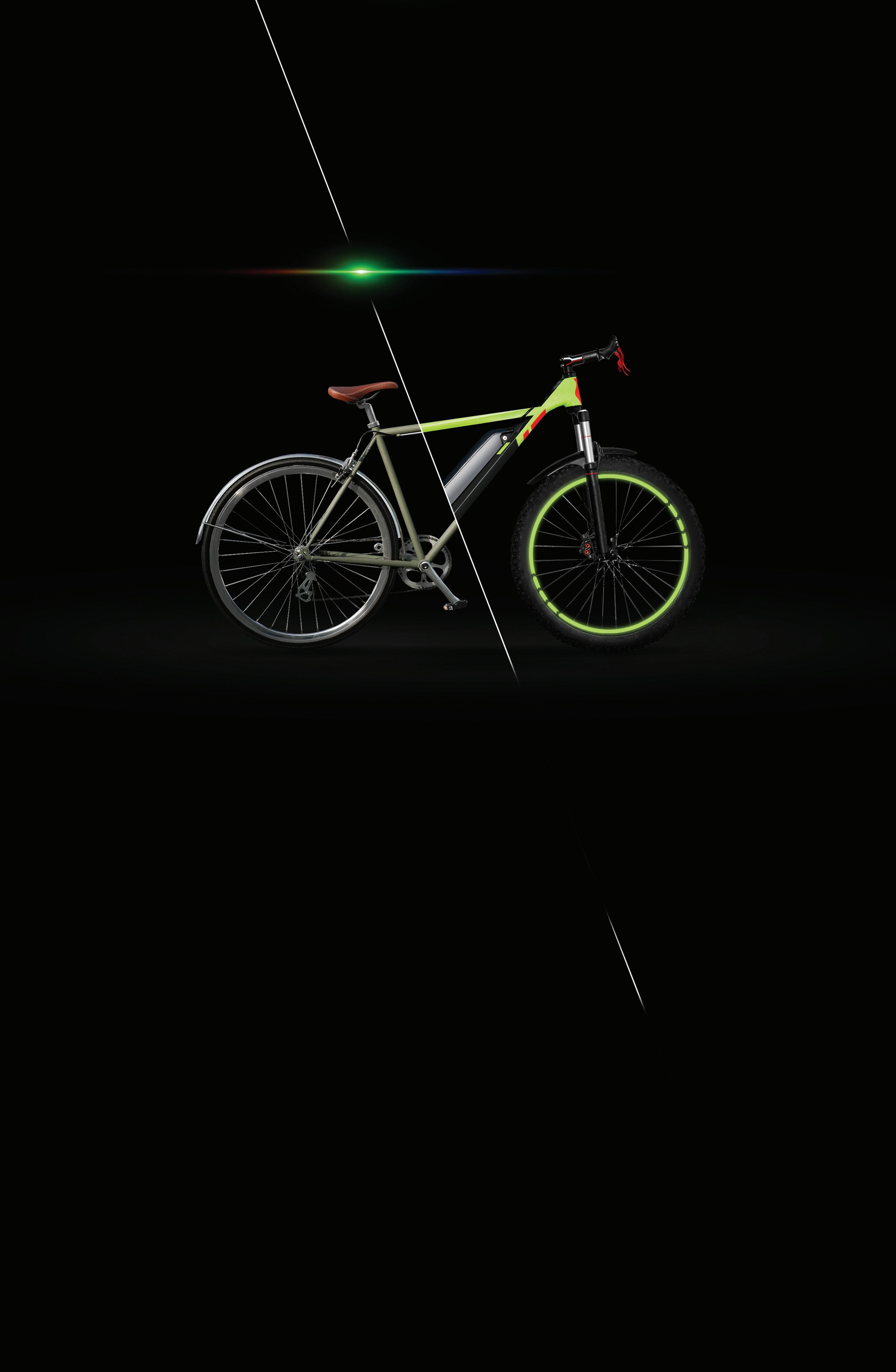






















































































































































In this, my final magazine edition before going off to have a baby, our focus is on that ubiquitous word: sustainability. However you may feel about it personally, recent energy costs have meant that this issue is now a daily concern for all businesses, indiscriminately.
Yes, some sustainable solutions are pricey and challenging to adopt and some may argue it’s not the most electric (no pun intended) topic. Buttrust us and our contributors - it pays to do as much as you can now. Luckily, there’s a whole gamut of events (UKCA Conference 2023), working groups (UNIC Circular Economy Group), magazines (this one!) and articles with the same focus at the moment, offering guidance, best practices and expertise on being as green as possible and, ultimately,
reducing your bottom line. We wanted to compile as many resources and inspirational examples as we could, so we have a wide range of articles from exhibitors to vendors to opinion pieces for you (although not every single one is on sustainability). But the coverage is far from exhaustive, as more and more people and companies turn to a cleaner way of living and doing business. One such initiative from 2020 that we haven’t detailed but that deserves recognition is the Independent Cinema Office’s (ICO) Green Kit, which can be found on their website here: https://www. independentcinemaoffice.org.uk/ advice-support/green-cinema-toolkit/ We also want to avoid focusing on this important topic just as a one off, and so, we’ve made some changes to how the magazine is produced (see CTC's column for more details). Not only that, we've launched a new mini-series
in this edition, “Green Shoots”, which you’ll find on page 12. To keep the sustainability torch burning (!), this will look at initiatives, case studies, businesses, individuals who are taking action, however they can. If you know of anything that fits the bill then do get in touch with Commissioning Editor, Peter Knight: peter.knight@cinematechnology.com.

See you all soon, when I’ve forgotten what it is to sleep.
Helen
 Helen Budge, Managing Editor, Cinema Technology Magazine
PROUD CARBON
Helen Budge, Managing Editor, Cinema Technology Magazine
PROUD CARBON

Cinema Technology Community (CTC) 124 City Road London

EC1V 2NX
E: info@cinema-technology.com
MANAGING EDITOR: HELEN BUDGE
E: helen.budge@cinema-technology.com
33
Nigel Dennis looks at the green benefits of moving to digital.

36
Tony Franks gathers opinion on how "cinema is changing".
39
For this edition's "A Spotlight On", Sandie Caffelle talks to Wallis Cinemas, South Australia.

42
How should cinemas be competing for attention in this values-driven era? DX's Jenny Sidorova takes us through it.
46
Comscore's Lucy Jones talks an abundance of films for 2023.
39
55
A successful ECA Slate Day 2023 detailed the upcoming juicy content pipeline for the sector this year.
Volfoni's Araceli Vaello talks to us about "Avatar: The Way of Water" and being a working mum.
66
ART DIRECTOR: DEAN CHILLMAID
E: dean.chillmaid@cinema-technology.com
COMMISSIONING EDITOR: PETER KNIGHT

E: peter.knight@cinema-technology.com
ADVERTISING: ADVERTISING TEAM
E: magazine.advertising@ cinema-technology.com
SUBSCRIPTIONS
Cinema Technology is mailed to IMIS Members. For subscription details and to read the magazine online, visit www.cinematechnology.com or email peter. knight@cinema-technology.com

AFTER a 22-year career in cinema, Jerry Murdoch, CinemaNext Country Manager, UK & Ireland, has announced his plans to retire. Murdoch will step down as country manager, to be replaced by current CinemaNext UK Sales Manager, Jordan Bedding.

Over the next few months, Murdoch will reduce his hours and spend his time supporting and assisting Bedding with the transition, before assuming a newly created role within the group until he fully retires.
Murdoch commented, “I have truly loved my role in this exciting industry. It has been rewarding
in so many ways and I still get a thrill when we open a new cinema [...] I am honoured that CinemaNext has asked me to carry on in a new capacity, but it is time to hand over the reins and I wish Jordan nothing but tremendous continued success.”
Georges Garic, CinemaNext CEO, added, “I was terribly sorry when Jerry first came to me to discuss his retirement plans, but I fully support his decision to take a step back after more than two decades in the business and wish to pay tribute to the contribution he has made to our group, building up CinemaNext UK from a two-person operation to one of our crown jewels in just 7 years.”
CINEMANEXT has announced that CinemaNext UK recently completed two projects for Curzon Cinemas at their new Canterbury Riverside and Bentall's Centre Kingston locations.
Their second venue to open in the city, Curzon Canterbury Riverside, boasts five spacious screens, with names inspired by The Canterbury Tales –including The Chaucer, a dedicated Dolby Atmos
screen.
The new Curzon Kingston features four screens with Dolby Atmos sound, recliner seats, and the latest in laser projection, as well as a rooftop bar and a restaurant. Each screen is named after local, iconic former cinemas of Kingston, recognising the town's cultural history, namely the Palace, the Century, the Electric and the Coliseum.
IT is with great sadness that we heard of the death of an industry grandfather and friend, Sir Sydney Samuelson, in December 2022. I was lucky to be able to address him simply as “Sydney”, after working with him as part of the Projected Picture Trust, an honour that I did not take lightly.
Sir Sydney had so many stories and had worked with and interacted with so many of the cinema and movie greats on both sides of the camera, all the while being incredibly generous, both financially and with his time and knowledge.
The number of different causes that Sir Sydney was involved in would require the writing of an entire book in its own right. But two of these were the BKSTS/IMIS and the CTC. When the CTC was setting up the projection certification scheme, Sir Sydney helped secure funding from the David Lean Foundation, enabling the scheme to run.
Sir Sydney started his career as a rewind boy in his local cinema, the Luxor Cinema, Lancing, West Sussex, UK, something he was immensely proud of that formed an important part of his connection to projectionists throughout his career.
After leaving the RAF in 1947 he became a trainee cameraman in the British Colonial Office film unit. He then went on to work for Rayant Pictures, for whom he filmed the coronation of Elizabeth II in 1953.
Later on in life, Sir Sydney formed Samuelson Film Services (SFS) with his brothers providing camera, lighting, grip, sound, crew and transportation around the clock to film various productions. The list of movie credits that the company provided equipment to encompasses many of the greatest classic titles in
IT IS with great sadness that we learned of the passing of Nigel Shore at the end of January 2023, after a long illness. For many in the industry, Nigel was a well-known and respected engineer and long standing member of the CTC (Cinema Technology Community).

cinema history: “Doctor Zhivago”; 13 James Bond movies; Richard Attenborough’s “Gandhi”; Richard Donner’s “Superman"; Fred Zinnemann’s “A Man for All Seasons”; Norman Jewison’s “Fiddler on the Roof”; Stanley Kubrick’s “2001: A Space Odyssey” and Milos Forman’s “Amadeus”, and there were many others. SFS became one of the largest film servicing companies in the world – Corgi even made a model car of one of the camera vehicles.
Heavily involved with the development of BAFTA, including the development of their headquarters at 195 Piccadilly, Sir Sydney was appointed as the first British film commissioner in 1991. In this role he campaigned to promote the UK as a leading destination for international film production and as a provider of world-class crew and facilities. He also encouraged the UK government to introduce a tax incentive for international productions that based themselves out of the country, using UK crew, talent and production services, and the setup of a network of film commissions across the country.
In his personal life, Sir Sydney met his wife, Doris, at a film club in 1946 and they were married for 72 years until she sadly passed away in April 2022.

I will always remember having a long and detailed debate with Nigel in a Leicester Square Wetherspoons pub after a CTC meeting, about the transition from film to digital, and the implied accompanying changes. That discussion and a trip to a cinema museum in Newport, Wales, where Nigel spent the day rebuilding a Cinemeccanica Victoria 35mm projector are two of the strongest and fondest memories I have of him. He freely gave many hours of his time towards finding solutions for cinema-based issues. And people fondly talked about his Volvo car that had gone through the mileage counter several times over.
His career began at the Bournemouth Odeon, before moving on to the Poole Arts Centre and later on he became one of Sound Associates’ best known and respected engineers. He then decided to start his own company, NSS Imagineering.
In 2013, Nigel was awarded the Alan McCann Award for Cinema Excellence, an award given to an individual or organisation that has shown consistent and passionate dedication to improving the cinema-going experience. This short excerpt from Nigel’s 2013 award illustrates him best:
“In terms of UK cinema, one of the most important ‘back room boys’ in any of our cinemas, is a living legend. That person is Nigel Shore. No one can say that Nigel has ever been 'just' an engineer, or supplier of technical services. Much more importantly he’s been like a valued friend that you could call on, day or night, weekday or weekend, even Christmas or Easter, and he would be available to try and help resolve all manner of sticky technical situations.”
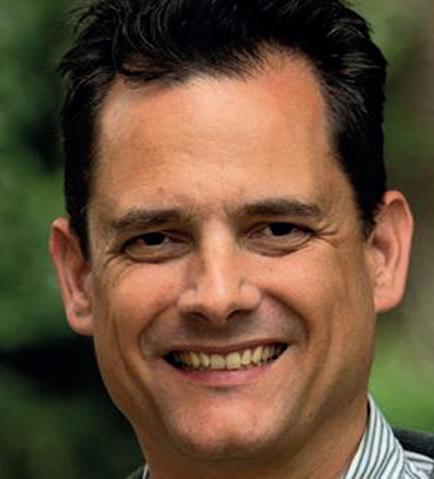

CINEMA industry veteran, Crispin Lilly, has been appointed as new managing director of Showcase Cinemas UK. Lilly will join Showcase at the end of April with a pledge to build on the industryleading in-cinema experience Showcase is renowned for, and to build on the already successful strategy to drive admissions into its screens, post-pandemic.
Lilly, who started his film career as a cashier at his local cinema in Southampton, joins Showcase following three decades working for some of the biggest names in the industry. His new role at Showcase follows hugely successful stints at Cineworld, Everyman and more recently working on a consultancy basis with The Really Local Group, bringing accessible cinema to smaller catchment areas, alongside his charitable work as trustee of MediCinema.
Lilly said, “I am absolutely delighted to be joining the Showcase team and helping them continue to deliver amazing cinema experiences across the country. Cinema remains a powerful and affordable moment of escape and excitement that is more important than ever for our guests."
Duncan Short, Senior Vice President USA & International Operations said, "We are extremely pleased to have appointed Crispin to head up our UK business. He will lead a dynamic and passionate team that delivers an unrivalled experience for guests across the country, and his experience and leadership will only further enhance this."
VOLFONI, a global leader in 3D cinema technologies, has announced that Adde Technologies Cinema, a designer, manufacturer, and installer of cinematic audio-visual equipment, has installed the EDGE 1.2 Active Glasses and ActivHub Cinema Kit at LG’s first global LED cinema screen at Cinezyphyr in Asnieres, France.
Designed to exceed moviegoers’ expectations with immersive, life-like 3D images, the combination of Volfoni’s EDGE 1.2 Active Glasses and ActivHub Cinema Kit was selected by Adde to complement the extraordinary visual capabilities of LG’s LED technology.
“Each component specified for Cinezephyr’s technology-defining auditorium represents quality of the highest order,” explained Eric Le Cadre, Commercial Director at Adde. “Through Volfoni, we have identified an industry-leading, LG LED
compatible solution that will deliver a unique viewing experience.”
Delivering high-quality 3D images with natural colours to all seating positions, the EDGE 1.2 Active Glasses feature an ergonomic design for full viewing comfort, a rubberised nosepiece, three sizes of adjustable arms and weigh only 56 grams. With automatic infrared synchronisation and a wide reception angle, the glasses can seamlessly connect with the ActivHub Cinema Kit to complete a comprehensive 3D solution.
“At Cinezephyr, we’re committed to exploring innovative formats that serve astonishing moviegoing adventures,” added Xavier Orsel, General Manager, Cinezephyr.
“By employing Volfoni’s exceptional 3D technology, we can enhance cinematic viewing for our audiences and deliver upon that commitment.”

FILM industry technology company, Vista Group, is relaunching its podcast, Behind the Screens, which serves up the latest box office figures, audience demographics and insights on the newest movie releases.
Hosted by Matthew Liebmann, Vista Group’s Chief Innovation and Data Officer; Simon Burton, Numero and Maccs Chief Executive Officer; and Ryan Provencher, Movio Senior Account Manager, the weekly episodes draw from their extensive industry knowledge and Vista Group companies’ business tools to provide informative and engaging content for the cinema industry.
The podcast, which launched in June 2021, will feature more concise weekly episodes with a sharp focus on weekend box office and audience insights. Interviews with key industry figures will continue in the form of longer monthly episodes, with a deeper dive analysis of the industry at the end of each quarter.
The first episode will explore the opening weekend of "Ant-Man and the Wasp: Quantumania".

THE engineering team at GDC has been busy working on some impressive new audio solutions for cinema surround sound, including DTS:X for IAB Immersive Audio. GDC now offers a comprehensive portfolio of audio solutions and equipment to fit the needs of all exhibitors and all budgets, as well as a ‘built-in’ cinema audio processor to save on cost, space, installation, and maintenance time. This is a solution offered as a license within the SR-1000 IMB for 5.1/7.1 cinema surround sound or DTS:X Immersive Audio for IAB.
GDC also offers a range of hardware options such as Digital-to-Analogue Converter (DAC) and Audio IO (Input-Output) Box AIB-2000 allowing you to connect the SR-1000 with a built-in audio processor to existing or new analogue amps. The company also just launched a super innovative AES67/AES3 32x32channel bidirectional converter - the AE-6703. Essentially, this product can convert both ways between AES3 and AES67, meaning it can bridge the gap between an existing network and/or analogue equipment. If you have network amplifiers, the AE-6703 can translate the AES3 output of the SR-1000 IMB to the AES67 protocol for network amplifiers, meaning less waste and getting more


AFTER a nationwide search, Rob Younger, owner of Parkway Cinema in Barnsley, has been named the winner of the nationwide UK Cinema Heroes competition. Joyce Kane, Host, Odeon Kilmarnock and Mark Gallagher, Marketing Manager, Arc Hucknall, have been announced as runners-up.

To celebrate the UK release of “Empire of Light”, Searchlight Pictures partnered with the UKCA in December to launch a competition to celebrate the UK’s ‘Cinema Heroes’ - those who have dedicated their careers to keeping the magic of the big screen alive for communities
With more than 800 members in over 80 countries, Cinema Technology Community (CTC) is the world’s leading independent, not-for-profit trade organisation providing valuable educational resources to the global cinema industry.

With a highly engaged global community and a regular stream of content designed to help the industry improve the moviegoing experience for consumers, CTC is the go to place for cinema industry executives.
And what’s more, it’s completely free to join because, at CTC we believe that the industry is stronger and better when we all learn and share together, so we’ve removed the biggest barrier.
Join our global community today for FREE by visiting www.cinema-technology.com
throughout the country.
Welcoming the announcement, Phil Clapp, Chief Executive, UKCA, said: “The number and range of nominations received in response to the UK Cinema Heroes competition speaks volumes about the extent to which cinema-goers recognise and appreciate the dedication shown by so many working in the sector. I know I speak for all association members when I offer my sincere congratulations to Rob, whose nomination received widespread support from an incredible number of his customers and industry colleagues.”
The “Roxy Xtreme” screen is powered by two NEC NC3541L RB laser projectors
SHARP/NEC Display Solutions
Europe has been chosen by Roxy Cinemas and Scrabble Entertainment to deliver the laser projection technology for Roxy’s prestigious new Dubai Hills project, including the largest PLF screen in the Middle East and North Africa. Dubai Hills is taking advantage of NEC's RB laser technology, delivering compelling benefits in terms of image quality, cost and operational efficiency.
Roxy Cinemas is a leading luxury cinema brand in the United Arab Emirates (UAE) where guests enjoy

international blockbusters, culture events and sports action all in a sophisticated environment.
Dubai Hills is this year’s biggest new opening by Roxy Cinemas in the UAE. The cinema hosts the single largest PLF screen across Middle East and North Africa, measuring 28 meters by 15.1 meters. At 423 square meters, the “Roxy Xtreme” screen is the size of two tennis courts.
To power the installation, Roxy Cinemas and Scrabble Entertainment, the leading provider of end-to-end digital cinema solutions in the Middle
The subject of sustainability can't be covered in a few articles in one edition of CT Magazine, so Green Shoots is a new column that is designed to keep the conversation going. It will evolve over time, but its aim is to highlight news, resources and information on the topic.
AT CINEEUROPE 2022, Danish company, Stay-Well, introduced a full line of sustainable cinema packaging products. The products are made from bamboo, chosen for its eco-friendly properties, but Stay-Well also had another objective. Due to their research into, and focus on, reshaping post-mix cups, the company is aiming to increase cinema post-mix sales.

“When we set our hearts on developing a complete range of sustainable packaging products we didn’t only focus on the sustainability aspect,” said Stay-Well founder, Gunnar Liland Thomsen.
“As an added benefit for cinemas we also
reshaped the range of post-mix cups, in order to make the sizes more distinctively visually different. In terms of tooling for cups and lids this was, of course, a major investment - but based on the cinema feedback so far it seems the investment was worth every dollar spent. Our cinema clients can measure and track the cup sizes that customers are choosing, and they’re proving to be bigger than before.
“It is too early to make a guaranteed, statistically-sound analysis of whether post-mix and menu sales have been strengthened by reshaping the cups.
But if that ends up being the
conclusion - and it’s looking positive - then our mission has been accomplished. And if, at the same time, we can deliver the cinemas a more environmentally AND financially sustainable packaging solution then the increased focus on sustainability will matter even more. And this is what we at Stay-Well like to think of as ‘sensible sustainability.’"

Challenges await as sector grapples with impact on the planet
In 2006, a documentary film that grossed $50m in cinemas was one of the first times the world’s attention was focused on climate change. That Davis Guggenheim’s film was based on previous US Vice President Al Gore’s book and lectures made it all the more powerful. “An Inconvenient Truth” heralded a sea change in public opinion, but also highlighted the film industry as a vector for this change using storytelling as a tool to educate and inform. However, the industry is also responsible for significant carbon emissions. In a recent report I wrote, it was apparent that the film industry is a significant contributor to carbon emissions but is also not very advanced on waste, pollution and recycling. There is a near universal sense that humans are not doing enough to reach the global warming targets set out by global governments in the Paris Agreement of 2015, as expressed at Egypt’s COP27 conference. The urgency, while not yet at tipping point to affect people’s habits enough, is increasing and film and cinema’s contribution is part of that discussion.
The film and cinema industries underwent their first major change to becoming more environmentally friendly when the different sectors moved to digital: digital production and post-production, digital mastering and
distribution, and digital projection. At its peak in 2008, I estimated that the theatrical distribution sector was using 1.2 million miles of celluloid a year in producing release prints to be shipped by truck to cinemas, then recovered and destroyed or recycled. This is the equivalent of five times the distance between the earth and the moon. This was harmful on many levels, including the use of finite elements such as silver.
The film and television production sectors have recognised the environmental challenges presented by their business activities for some time - but cinemas less so than production. The first step to solving a problem is recognising and understanding the size of that problem, and that requires measurement. Reporting the results of that measurement is an active part of the industry, but some
1.2
6750 hectares hours mln miles
The area of deforestation that a single sound stage can be responsible for. of celluloid was produced for movie release prints in 2008. The average annual usage of a cinema projector.areas are more advanced in this than others. Indeed, some areas are more difficult than others to measure. Even so, with the plethora of measuring systems in use around the world, the first issue is to standardise the measurement methodology so that we are all working from the same core principles.
Global, regional and national film organizations (NATO, UNIC, SMPTE, EDCF, UKCA, BFI, CNC, and many more) all have working groups or people looking at the issue of sustainability in the film and cinema sectors. However, it is true to say that the issue of sustainability is not fully woven into the mainstream of cinema exhibition in the way that it is in film and TV production where sustainable certification schemes such as Project Albert exist and are enforced by agencies, funders and broadcasters. From March 2023, the French film agency, CNC, will require a pre- and post-film production carbon audit for film producers.
In 2006, a study from UCLA assessed that the US film and television industry produced 15 million tons of carbon dioxide each year - the equivalent emissions of driving 37.2 billion miles in a petrol vehicle. The industry in LA was found to make a larger contribution to greenhouse gas (GHG) emissions than the manufacturing, clothing, or hotel
sectors. That was 16 years ago, and the industry has grown significantly since then as the demand for content has grown.
The sheer number of people that work on a film shoot, as well as the travel required, is a major contributor to GHG emissions. The British Film Institute (BFI) published a joint report in September 2020 (known as Screen New Deal, in cooperation with We Are Albert and Arup), estimating that the typical blockbuster motion picture (budgeted at over $70m) produced a carbon footprint of 2,840 tons of CO2, the equivalent amount absorbed by 3,709 acres of forest in a year. Transport was the single biggest contributor at 51% of carbon emissions, mains electricity and gas use accounted for around 34%, and diesel generators for the remaining 15%. Material waste is also regularly produced, from sets to props. Of the transport emissions, 70% is associated with land transport, and 30% with air travel. The type and number of shoot locations will drive the breakdown of travel emissions. Of the gas and electricity used, 30% is down to the production. The widespread use of diesel generators accounts for 15% of total carbon emissions.
In a similar vein, 2021 research by the US body Sustainable Production Alliance (SPA members: Amazon Studios, Amblin Partners, Disney, Fox Corporation,
4.2m
Omdia research estimates that global feature film production was responsible for emitting 4.2 million tons of CO2 in 2019. Fuel for transport and generators is responsible for around half of all CO2 emissions on a tentpole movie set.
50%
NBCUniversal, Netflix, Participant, Sony Pictures Entertainment, ViacomCBS, and WarnerMedia) calculated that “tentpole” films had an average carbon footprint of 3,370 tons of CO2. Fuel, both for vehicle and generator use, was the largest source of GHG emissions on these films (48–56% of emissions). That proportion varied by budget type of the movie being made. In November 2022, Film London launched the Fuel Project, which gives practical information to film and TV producers on how to reduce the impact of fuel consumption during the production process. Diesel on sets (used to power heavy vehicles and generators), and truck use, are both big energy issues. NEP UK has converted its entire fleet of outside broadcast trucks to GD+HVO (an advanced hydrotreated vegetable oil) that has reduced their emissions by 95%. The trucks also have wind deflectors which can improve fuel economy by as much as 8%.
Using budget as an estimate for a breakdown of each type of production globally, and using SPA figures as the guideline emissions total, Omdia estimates that the production of feature films generates 4.2 million tons of CO2 annually, mostly from small films, which are the vast majority of movies produced each year. The unique nature of a film project makes recycling and reuse difficult but not impossible, and clearer tracking of props, use of renewable energy, rechargeable batteries, clearer coordination of the shoot will all help to improve the impact.
Film production is a relatively defined activity to measure, report and then manage, but there is less environmental data available for cinema exhibition. A recent study from The Shift Project (a French environmental think tank) estimates that in France, the cinema exhibition sector generates 1.1 million tons of CO2 a year. Extrapolated out, this would put the cinema exhibition sector’s annual global contribution at around 38 million tons of CO2 - but this is not a scientific calculation, merely an indicator, and requires further study. The number of people visiting cinemas is also an issue, as customer transportation, access links, parking are all relevant to the total output of carbon surrounding the medium, as well as the potential wastage and pollution linked to coffee cups, plastic cutlery and straws. Little has been measured concretely in cinemas to date, and while the industry is talking about it, a methodology needs defining and agreeing upon.
1.2 03/23
Technology has a large role to play in reducing the environmental impact of film and cinema, such as virtual production (VP), laser projection, smart heating and cooling systems, and LED lighting. But there are other tools in the armory: new fuels, education, engagement, community leadership, and workflows.
Laser projection (new or retrofit) is an energy saver compared to xenon bulbs, and while the exact savings depend on the projector type and cinema environment, the savings on electricity costs and eliminating bulb changing or disposal is a distinct benefit of laser. For these reasons, Spanish exhibitors have a national plan to move to laser projection by 2025. At its heart, a projector is a light source, and there are a number of other lighting areas, such as the foyer and auditorium, where LED lighting can save energy and costs compared to other lighting sources. In-built servers reduce energy consumption compared to standalone servers and other technology items can improve energy efficiency, like audio amplifiers and IT equipment. However, the biggest source of energy consumption for a cinema lies in the - very necessary - heating, ventilation and air conditioning (HVAC) system, which needs to be working much of the day, however many or few people are in the venue. With rising energy prices, this becomes not only an environmental issue but also a business one. More fundamental solutions to sustainable and less expensive energy are possible, such as heat pumps or hydroelectric
power sources. But most cinemas will not be able to change so radically and will need to look to a renewable energy company as their provider, as well as the possibility of installing more efficient HVAC systems and better energy management software (smart tech). In a recent report I wrote on this subject, I identified seven major carbon emission areas for cinemas, all of which need to be measured and reported, and solutions found for greater sustainability.
There are three areas to focus on for the film production and cinema exhibition sectors: greenhouse emissions, pollution and wastage. All three need to be approached differently but in a coherent way and while there has been work done on understanding the environmental impact of these two sectors, more needs to be done and a plan developed to move to net zero, preferably without government intervention. With rising energy prices around much of the world due to geo-political factors, one advantage is that sustainability is increasingly aligned with energy cost reduction for companies, which will bring practical solutions closer to implementation, before change is imposed on them. Given the complexity and scale of the challenge, it remains to be seen whether a Net Zero film and cinema sector is achievable at all, but the film industry as a whole needs to work on these from within if it wishes to retain control over the direction of solutions. We have done it before with the digitisation of cinemas, and we can do it again for a significantly more important goal.
uring CineEurope 2021 in Barcelona, Cinionic gave a presentation in the main auditorium on sustainability and how it fits within both Cinionic and founding partner Barco’s company values. In fact, it was this very presentation that planted the seed of the idea to have an entire edition of Cinema Technology Magazine themed on the topic. While many companies both inside and outside of our sector are now more active in their approach to sustainability, together with Barco, Cinionic has shown that their dedication in this area is in the very DNA of the company. On Barco’s website, there is a real wealth of
information and data on sustainability that helps to back up any marketing - and it’s clear that there’s a real desire to do the right thing for the environment. After all, it’s actions, not just words, that count in this area. But, positively, it’s important to stress from the beginning that the company is not the only one working hard in this area, with companies like SharpNEC, for example, having a zero-to-landfill policy when it comes to refurbishing equipment.
Adam Cassels, VP of Global Marketing, is a true ambassador for sustainability within the company. He provided CT with some highlights of what Barco is doing (please note, more could be written on this than we have space for).
 Peter Knight explores the importance of sustainability in action with one of the largest manufacturing companies in the cinema industry.
Peter Knight explores the importance of sustainability in action with one of the largest manufacturing companies in the cinema industry.
To reduce the carbon footprint of their operations by 35% based on their 2015 baseline
To reduce the energy footprint of their products by 25% based on their 2015 baseline
To ensure that at least 75% of Barco’s revenue comes from products that have the Barco ECO label
It has been quite “fashionable”, or PR-friendly, for companies to suggest that they have sustainability credentials, without necessarily being able to back them up.
Barco has significant ongoing initiatives in support of global sustainability goals that cascade down through all departments and subsidiary companies, including Cinionic.
Barco has categorised their green initiatives into four distinct areas: Laser is the green choice for
It is nearly 10 years since Barco in 2024 announced their first laser projector for digital cinema, based on their laser technology, which was used across other entertainment destinations. CT has covered the range of digital cinema projectors over the years, but it is worth remembering that Barco and Cinionic have worked hard to develop a full range of laser projectors to suit every size and type of screen, from smaller boutique cinemas and micro-theatres, all the way through to the largest (giant) premium sized experiences.

And it’s worth revisiting the benefits of laser within the context of sustainability. Laser projectors use far less power in terms of electricity in order to get the same level of light output for an auditorium, while also producing a much lower heat. This means less air conditioning and extraction is required for the projectors, whether housed in the projection room or auditorium, reducing the amount of power required to cool a building, along with the savings associated with not having to install the extraction system in the first place in a new build. Alongside that, there are savings associated with not having to ship replacement lamps.
Moving to laser projection offers cinemas an array of benefits that go beyond just enhancing the visual performance, increased moviegoer satisfaction, operational efficiencies, and the ability to use fewer resources. And at the time of writing, there are more than 30,000 laser solutions deployed worldwide.
One of the most significant parts of the company’s environmental ethos is around their ‘ecoscoring’ framework. This means that right from the product design stage, Cinionic harnesses Barco’s eco design policy which gives products a rating using the Barco ecoscoring framework. In practice, this means that each product sold today is designed and evaluated based on a four-point eco-axis, leading to an overall ecoscore for the product.
Barco wanted to communicate openly about the environmental footprint of their products. However, currently, inside or outside the industry, there is no holistic scoring scale available that covers their range of products. The existing scoring system only covered one specific aspect (e.g. power consumption or material use), or focused on one typical product group (e.g. household equipment). This resulted in Barco developing their own objective tool that grades products according to all aspects of their ecodesign performance: and Barco ecoscoring was born. The framework that has been used to approve the ecoscoring is defined by the international standard ISO 14021 and the complete methodology was validated by experts from Ernst & Young.
Products that are at the top of the scoring and thus have a lower environmental footprint are marked with the Barco Eco Product label. So, what does the ecoscoring approach mean in relation to cinemas? And how does it impact the way Cinionic builds and designs products?
This is, unsurprisingly, the energy a product consumes. With the price of electricity increasing at an incredible pace and unlikely to return to where it was previously anytime soon, having energy-efficient equipment is vital. And it’s not just laser as a light source that needs to be as energy efficient as possible - the rest of the projector needs to be as well. With Barco’s ECO standby mode the power consumption can be reduced all the way down to three watts, from in the hundreds when the projector is in active use.
All Barco products comply with the necessary legal standards in the regions they are active. Apart from complying with the usual REACH (chemical waste), RohS (hazardous substances) and WEEE (electrical waste) requirements, as per EU regulations, Barco operates using specific documentation, which includes instructions regarding material makeup and usage, thereby making the recycling of such elements easier. The list of materials
is publicly available, and processes are in place to ensure that any design of new technology and procurement of raw materials, parts, and sub-assemblies is compliant with these lists. All cinema technology is validated based on this policy.
Unlike some logistics companies that use an enormous amount of unnecessary packaging for their products, all Barco products are packaged with only the minimum required amount, using alreadyrecycled materials and with most being recyclable again.
Barco projectors are all designed for both easy disassembly and repair, with the materials in them categorised for recycling purposes. Maximising this modular design, particularly of the critical components, allows the products to be upgradable. Within this is also the service and repair model that allows for the lifetime extension on all cinema projectors.

The challenge with technology, and particularly chip-based electronics, is that many product lines, ultimately, become functionally obsolete. And after what always appears to be a short time, support for the product seems to be discontinued. While there are sometimes sound business reasons for this, it is always refreshing when a company recognises that this can be developed so that both customer and company benefit, as well as the environment. For many exhibitors’ previous projector generations, there are three ways that Cinionic supports lifetime extension:
Enhanced service and support
Fleet management strategy
Laser light upgrade kits (Series 2 projectors)
Cinionic and its partners operate a global network of certified and experienced cinema professionals dedicated to
supporting exhibition operations. Their enhanced service and support is designed to help their customers maintain and protect their existing projection technology.
Through (projector) fleet management, Cinionic can work hand-in-hand with exhibition to maximize the lifetime of existing fleets, only renewing relevant and necessary equipment where needed.
Cinionic offers a unique laser light upgrade kit that allows existing xenon projectors to be upgraded to the latest light source technology. These kits not only provide customers with the benefits of this technology, but in upgrading, the equipment is able to be operational for a much longer period of time. A number of savings are therefore made, both financial, in terms of the cost of running a laser projector and purchase of new equipment. But also a saving in terms of carbon footprint from building new projectors or scrapping old ones. And this is alongside the carbon footprint associated with shipping a whole new projector versus a (smaller) laser upgrade kit.
The fourth pillar in Cinionic’s green credentials is their commitment to creating a more circular economy for cinema visualisation technology. In addition to their ecodesign initiatives for new products, Cinionic engages in circular economy programs that harness technological and business

The SP2K laser projector is the second projector in the Series 4 range to receive an A+ Barco ecoscore. More than just bringing numerous benefits to enhance the movie experience and creating peace of mind for exhibitors, the projector series also meets high eco-requirements:
Energy A: The SP2K smartly manages its power consumption and is an energy-efficient product thanks to its low-power standby mode and ECO mode; great for the environment, but also for the utility bills.
Packaging B: The packaging of the projector and its peripherals (screen,
lenses etc) is kept to a minimum. And the design is further optimised for efficient logistics and transport.
Materials: After the release of the other Series 4 projectors, Barco raised the bar even more in its use of eco-friendly materials. The SP2K projector is the first Barco cinema product with a housing that’s made of halogen-free plastics and contains post-consumer recycled plastics.
End-of-life optimization: Just like its 4K nephews, the SP2K is designed with maximum modularity in mind to enable ease of servicing, ability to upgrade and lifetime extension.

model innovation. This means that they use two approaches to further the ability to realise a circular economy in the industry:
Classical circular economy concepts like service, repair, and reuse reduce the service needs over the lifetime of new products by ~75% compared to earlier generation products. New sign-up models - introduced in 2020 - that offer outcome-based-as-a-service visualization for greater reuse, redeployment, and remanufacturing through Cinionic’s end-to-end managed services for the technology in the booth
Cinionic and Barco have placed sustainability and the environment as a key part of their culture that goes way beyond just the cinema-specific elements mentioned in this article. The amount of information on the topic and how it is implemented, along with the scoring system, is impressive and can be held up as a real light for our industry to follow
(l-r) Barco Series 4 laser projector touch display and Barco Alchemy integrated processor (ICMP-X); Barco Series 4 laser projector in a booth environment
www.barco. com/en/ about-barco/ sustainability
CASE STUDY: SP2K Laser ProjectorThe idea to fit out the old Battersea Power Station with cinemas goes back to the late ‘80s when Warner Bros. announced that they were going to build a 24-screen multiplex in the legendary building...
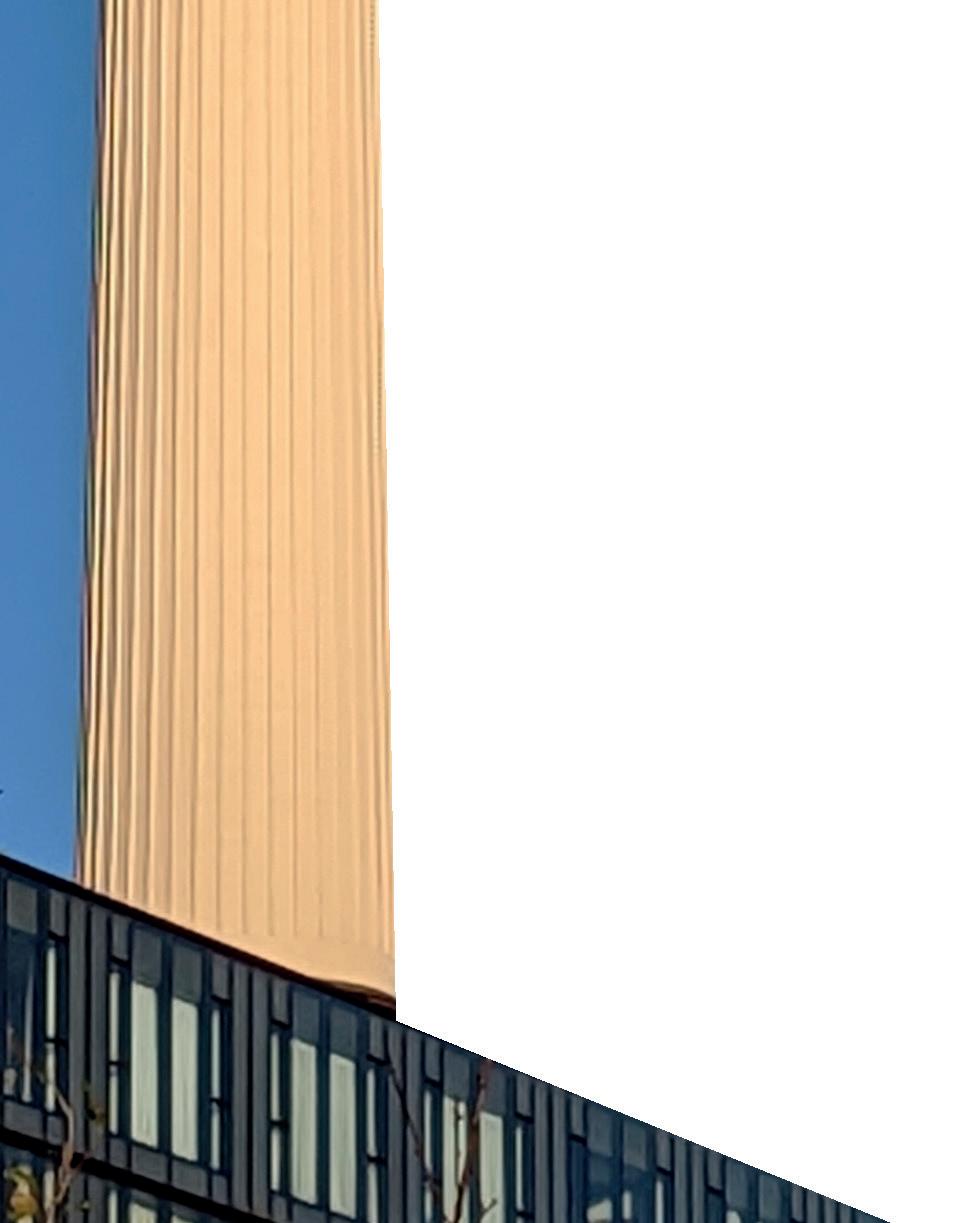
There were many years of more announcements and further press releases but nothing moved forward. The power station structure was left open to the elements, deteriorating, until a Malaysian consortium got a major restoration of the power station underway in 2015. The grand opening of the site took place in October 2022.


Cinemas were an integral part of the redevelopment but the story has a history going back a few years… Stephen Burdge, owner of the beautiful three-screen Olympic Studios cinema in Barnes, South West London, and the three-screen Cinema at Selfridges in the basement of the famous London department store, was approached by the developers. They were looking to build some cinemas in the surrounding area while the main building was still being worked on. The idea was to build three small screens into railway arches directly underneath the main rail lines going into London Victoria – not the first place you would think of putting a cinema! This was to become the Cinema in the Arches (formerly Archlight Cinema) that launched in 2019, a stone’s throw from the power station. Stephen approached Sound Associates about supplying and installing all the equipment and we opened three screens with 60, 40 and 60 seats, all equipped with Barco 2K laser projectors and Dolby Atmos in each screen. The follow up to this successful little jewel of a cinema was the challenge of fitting two more screens into the main power station development itself.
There was a long period of drawings being proposed, revised and proposed again, before things started to settle down to create two medium-sized auditoriums on the third floor of Turbine Hall B. There are two separate turbine halls in the power station – Turbine Hall A was completed in the mid 1930s and the second turbine hall (B) wasn’t completed until 1955. It also has a notably different style to the Art Deco decor of Turbine Hall A.
Complete with its own dedicated entrance, the two-screen cinema sits above three floors of shops and restaurants.
Evaluation of the various different projection and sound technologies was underway. This included a trip to the newly completed Dolby Cinema in the BAFTA headquarters at 195 Piccadilly, mainly to listen to their new System 136 stage speakers that had been installed there. And it was at this point that the idea to outfit one of the screens at Battersea as a Dolby Cinema started to develop… by this stage the two auditoriums were formed but were essentially big empty white boxes (with an amazing reverberation time!) so incorporating the specific requirements of a Dolby Cinema were not too onerous, apart from having to accommodate the two very large 4K Dolby Cinema projectors and their associated laser racks.
The second screen was specified as having a full Dolby Atmos sound system (with the same System 136 speakers that were used in the BAFTA Dolby Cinema) along with SLS surround speakers. All the amplification and audio processing was provided by a QSC Q-SYS core and Q-SYS amplifiers.
The projector specified for this screen was a Barco SP4K12C with a Dolby IMS3000 server. This server not only provided all the DCP storage but also did all the Atmos sound rendering before passing on the audio to the Q-SYS via a 32-channel AES67 audio link. And both cinemas have ‘loges’ [private boxes] at the rear of each cinema for use by the Members’ Club. Each loge has a dedicated entrance and a unique sound reinforcement system that provides a mixdown of the Atmos soundtrack so it sounds just as good as being in the middle of the auditorium.
Something necessary to the cinema management was the ability to accept non-DCP content (BluRay players, satellite receivers, laptops and so on) in multiple different locations. This needed to be routed to either screen while allowing local
Graham Lodge, Owner & Managing Director, Sound Associates(l-r) the Dolby Cinema screen before any fit out work commenced; screen two a couple of weeks before opening; the Dolby Cinema room’s screen baffle wall and stage speakers

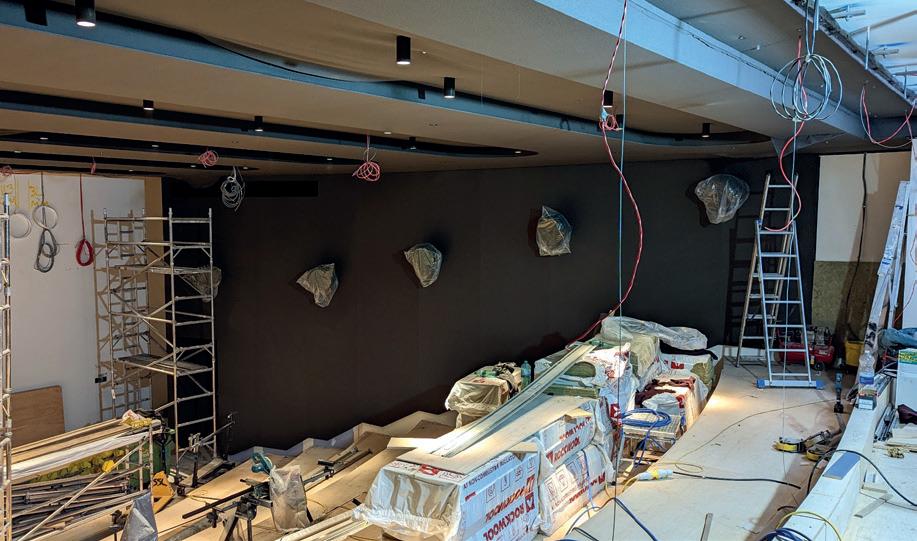

confidence monitors to show the management or the users on the stage to see what was being selected – all in 4K. And the final result was accomplished using a Blustream IP-based video distribution system that could be controlled by the Q-SYS system in either the Dolby Cinema or in the second screen and this system worked very well. The two new screens are to be run in conjunction with the three Cinema in the Arches screens, as a single five-screen complex, despite it being a five minute walk between the two venues. But the use of the RosettaBridge TMS system from UniqueX, with RosettaNET and Basekey for KDM delivery and distribution, means this is all accomplished relatively easily.

Once we knew what equipment was going to be installed into each screen, the next challenge was delivering, installing and commissioning it all. The building itself is enormous from the outside and is like a TARDIS – it’s even bigger on the inside!
Gaining access to the cinema space with all the equipment and necessary people took many days of careful organising and scheduling. Even just getting to the cinema from the main contractors’ entrance involved a 15 minute walk and lots of stairs. Goods deliveries had to be scheduled many days in advance and getting from the loading dock to the screening rooms involved more bookings, just to ensure we had use of the lifts.
The main power station opened in mid-October but the cinema was not quite ready at that time. But in midNovember there was a special screening of “Living” for Battersea members, with the cinema starting to open to the public later that month and a special pre-release screening of “Empire of Light”.
The finished cinema is a lovely little gem inside an incredible landmark. There are a number of very upmarket apartments within the main building
and, as well as shops and restaurants, there’ll be an enormous amount of office space; Apple is moving its European headquarters there in a few months time. And access to the power station is now easy, thanks to a recently-opened extension of the Northern line Underground network. Plus an Uber Thames Clipper boat connection runs from Battersea right to and through the centre of London.
Let us end by saying: Sound Associates was not the only contractor working on the two auditoriums in the main building. Andrew Robertshaw of ARC Cinema Solutions was the consultant on this project, Powell Cinema Engineers did the screen frames and screen surfaces in both auditoriums and Pete Ferguson installed and commissioned the majority of the lighting systems. Seats for both screens are from Ferco Seating (and are VERY comfortable!). The Dolby Cinema projectors were installed by Dolby themselves - Joe Papineau and Phil Dix did all the hard work and alignment of the system.
As we have all worked together on previous projects it was good to be working together in harmony to ensure the installation was as efficient and painless as possible. And a special mention to Jason Membry, one of our longest serving engineers, who carried out the installation of the Atmos sound systems in both screens under what were some very trying circumstances on site.



A big thank you to Natasha Padbury at Depot for providing CT with lots of info on Depot itself, and the CICAE mentoring scheme. And to Marieke Jonker for her thoughts and perspective on Filmhuis Alkmaar’s sustainability journey so far.
Helen Budge, Managing Editor, CT MagazineKnown throughout the UK and Europe for its green credentials, Depot is an independent three-screen cinema, located in the centre of Lewes, UK. Offering a wide-ranging programme of mainstream, arthouse and independent films, the venue is often written about in the context of sustainability, and was built on its holistic commitment to responsible environmental practices. These practices resonate throughout not only the physical building but the approach taken to the team’s ongoing operations.
As part of the 19th Arthouse Cinema Training Programme, CICAE (The International Confederation of Arthouse Cinemas) engaged Depot’s services to provide a three-month mentoring scheme for Filmhuis Alkmaar cinema in the Netherlands. The
site’s director, Marieke Jonker, attended Depot for three days in June 2022 to learn about the building design and operational measures to help inform the sustainability strategy, as well as insights for a potential new build opportunity.
Jonker focused on three key areas of development: to develop a ‘Green Team’, incorporating Alkmaar’s board, staff and volunteers; to develop a toolkit to understand their environmental impacts using carbon measuring tools; and to create a vision for, and connect locally within, the green cinema network.
Natasha Padbury, Sustainability Manager, and Carmen Slijpen, Creative Director and Programmer, then presented a “Sustainability in Action” seminar to the other trainees as part of the course finale in Venice in September. This provided a fantastic opportunity to share knowledge, discuss challenges and offer a practical toolkit for fellow cinema venues to use themselves.
Thanks to the CICAE mentoring scheme, Carmen Slijpen, Tasha Padbury and I were connected. We had several digital meetings and I then visited Depot to learn about how Filmhuis Alkmaar could become a more sustainable cinema.
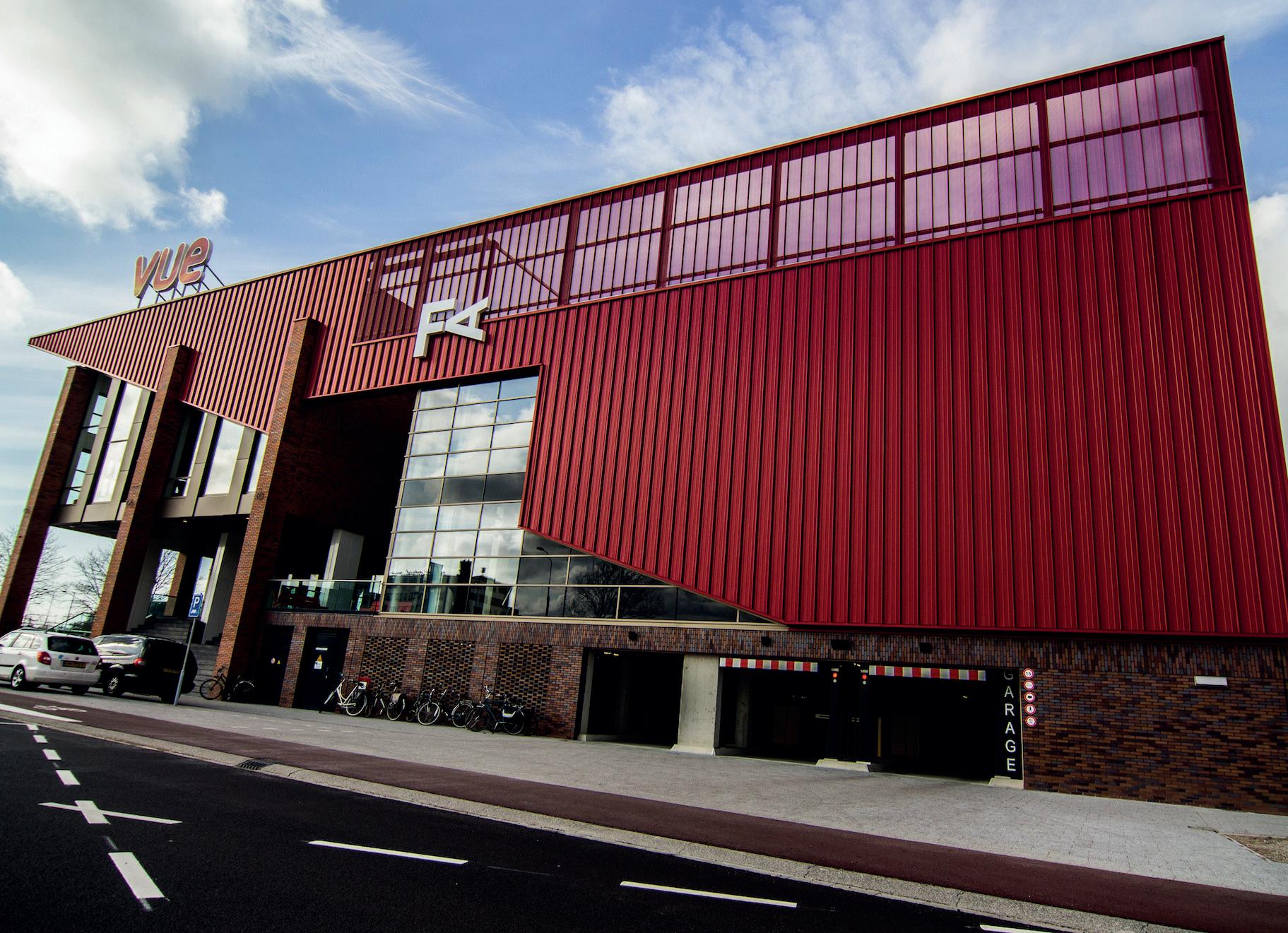

Alkmaar is quite a different venue when compared to Depot. It’s an existing building [not new or purpose-built] and is grouped with other companies including a casino, an Italian restaurant and a VUE cinema. This means that even the first steps we need to take, like calculating our carbon footprint,
will be a challenge. However, the sharing of best practices from Depot’s leadership meant a lot and was incredibly helpful.
Our team at Alkmaar has started a “Be Green team” and our sustainable journey will be based around this. Knowing where to start and making sure sustainability is being defended at all levels of our organization is, I believe, crucial to future success.
Though we have only just started, already green initiatives are popping up everywhere. And according to learnings from Depot, the theory is: begin with
With climate change the ever-more urgent issue it is today, Depot is keen to pass on their learnings to help any exhibitor / operator who wants to do more towards reducing their carbon footprint and emissions. Here are some sustainable ideas to consider from the team:
See the threats as a result of climate change as opportunities. We already have the skills to make a difference; it’s just a matter of harnessing them.
Understand your impacts. Start by monitoring your carbon footprint using free online carbon calculating tools (such as Julie’s Bicyle’s Creative Green tools) or engaging a consultant, giving you an invaluable knowledge base, to create a practical framework to help you prioritise your actions.
Build a “Green Team” - this can be one enthusiastic person or several. Utilise existing team skills and get endorsement from the top level. For example, administrators are great for data collection and research, technicians and facility personnel can make operational and building improvements, marketing can develop customer communications and so on.
Commit to the cause. Incorporate sustainability as a consideration in all decision-making criteria to keep it on the agenda and help integrate better practices across your whole organisation.
Make the easy changes first, taking small achievable steps. Create a list of mini projects and tackle them one at a time.
measuring and then tackle the opportunities one by one.
The green tools on www.juliesbicycle. com are a great starting point for this. With measurements, some clear process documents and somebody always wearing a green hat when making decisions on every level, you’re heading for a more sustainable future.
And keep the faith, because Tasha warned us that it can be a tedious journey, and it’s likely you will get depressed at some point, but at least you’re trying!
These will be very rewarding and help nurture a culture of positive action.
Be more efficient. Look at your current systems and see where you can minimise energy use. Make sure equipment is only running when essential, have proper shut down procedures in place and ensure infrastructure is well maintained, thereby saving you money and reducing emissions significantly.
Eliminate, reduce, reuse & recycle - in this order! Adopt this mantra with your supply chain to keep resource use to a minimum and keep materials in use for longer.
Whatever size, brightness or flexibility you need, the NEC ML DC Laser Projectors deliver the ultimate theatre experience.

Captivate your audience with ultra-crisp almost speckle-free RB Laser technology with 18, 20 or 24,000 lumens and 2K or 4K resolutions, whilst benefitting from lens inter-changeability with the NC2000 Series.
Visit sharpnecdisplays.eu

CT undertook a (virtual) visit to Eikona Cinema Solutions, a German software company based in Schwarzach, Germany, to gain a better understanding of their services
Over the years, both independent cinemas and bigger circuits have experienced significant changes in their computer programs, which have evolved into far more sophisticated and complex systems than ever before. Whereas there may have once been a fairly basic point-of-sale system for concessionaires and a separate one for ticket sales, the programs of 2023 are quite different. There are now cinema management suites that are extremely advanced software packages, capable of interfacing with practically every electrical device within an entire complex and reporting data in an easy-to-use way through a dashboard interface. It is possible to use the same information to provide preemptive maintenance tasks to staff members or to send notifications to them via their mobile devices, wherever they are located.
This type of cinema management system is available on the market in various forms, including one developed by German company, Eikona. As a spin-off from the Eikona Group,

Eikona Cinema Solutions GmbH (Eikona) was founded in 2012 and initially focused on the German market before crossing borders into Switzerland in 2014, followed by Austria in 2016, before becoming market leader in Switzerland in 2017. Currently, the company is used on 2,230+ screens across 351 sites located in Germany, Switzerland, Austria, Luxembourg, Belgium, and the Netherlands and with only 15 employees, of whom eight are directly involved in development.
Since its inception, Eikona has developed its systems in accordance with the needs and wishes of cinema operators like the famous Cinecittá in Nuremberg (the biggest multiplex in Germany) and the Cineplex Group (the biggest exhibitor in Germany). Today, these partnerships are considered to be one of the most important aspects of its business.
The Eikona solution is designed to simplify and automate the operational processes and workflows within a cinema or cinema circuit. Using this system, cinema managers are able to monitor operations, increase operational reliability, and provide management with modern marketing tools for the screen and the foyer.
A company’s ability to release improvements and upgrades in a timely manner is not solely determined by how much software is developed, but also by the underlying system
architecture. And so, like the majority of software companies, Eikona’s product suite is cloud-based alongside local installations of the product.
The Eikona Cinema Manager was initially built as a traditional theatre management system (TMS) but has been expanded to include digital signage, automation & monitoring and a circuit control system for cinema chains. The product can be integrated with the majority of projectors and servers, as well as point-of-sale (POS) systems, sound processors, content delivery systems, and immersive cinema systems.
Alongside these modules, the cinema manager has interoperability with the hardware and software of other providers, which is essential to achieving synergies and ensuring the smooth operation the system sets out to achieve. Having the ability to quickly interface with new systems and technologies is essential to Eikona’s success. A good example of this is that Eikona was the first provider in Europe to connect to the new Samsung Onyx LED screens. Additionally, Eikona has always been one of the first to
integrate national interfaces such as Weischer.play, TrailerApp, and Cinuru. Here, we look at some highlights of Eikona’s solution:

The idea behind the Eikona Cinema Manager is that it makes it possible to manage, control, and automate all relevant areas of your cinema from one interface. The result is a standardised process chain, with synergies between the various work areas, and loss-free processing of all generated data in the cinema. This tool provides a comprehensive overview of all relevant processes, enhances operational reliability, and enables the cinema owner to make informed decisions. The flexible and user-friendly interface provides users with the ability to grasp information quickly, making working with the system a pleasant experience. But what exactly are the features of a cinema management system? Below you’ll find more details:
The circuit control system is specially designed for operators of multiple sites. With this system, both projection and digital signage can be controlled centrally. A cinema’s most qualified employees have control of the systems at all cinema locations, ensuring consistent quality. This saves time, reduces errors, and provides a comprehensive overview of the processes throughout the sites. The data collected from all of the sites in the circuit control tool is aggregated and graphically displayed so that informed business decisions can be made based on the information. It can also analyse the correlation between trailer views and the number of visitors to a film. Because there is an integrated system, all weekly tasks appear in the same interface and can be completed quickly and easily.
The local installation of the circuit control tool allows you to import content for the screen preshow or the signage system. When content is scheduled for a show or to appear on digital signage, it is automatically transmitted and distributed throughout the network. This allows content to be played out instantly and updated or changed with little effort. The content is only transmitted to the sites for which it has been scheduled; this prevents unnecessary traffic and saves storage space at each site.
Depending on their level of permitted access, employees at all locations can import and schedule content, providing cinemas with total flexibility and allowing workflows and processes to be created in the most efficient manner.

Theatre management systems have become the core of most cinema operations, and Eikona provides all the expected features for managing playlists and content across screens and multiple locations. The main objective behind the TMS is to make as much of the process as automated as possible, allowing for the most efficient use of time and resources. Therefore, use of the TMS means that there are simply three tasks that have to be done manually:
Film setting: set desired values per film or release such as: DCP to use, volume, pause time, credit offset
Trailering rules: which selfpromotion or trailers should be played; when / where / how (as defined by rules)
Respond to system messages: for example, reorder KDM (content not delivered), movie settings are missing, content is missing
Digital signage management has been fully integrated into the management suite, allowing for an easy user experience. A cinema’s screening schedule can be advertised, in addition to promotions and special offers. It is possible to generate and distribute playlists for the signage automatically and to alter them according to a variety of criteria (age rating, time of day, movie type). Schedules, age ratings, types of release, and tickets that have already been sold can all be automatically imported from the POS. The playlists are automatically created based on the preshow of the screens in the foyer. Playlists can also be created independently from the preshow, based on rules, or manually, by dragging and dropping.
Numerous references and triggers provide maximum flexibility in content playback. It is possible to create playlists dynamically or statically. The content can be played on a timebased, programmable, linear, or random basis. The automatic content distribution system copies content to playback devices and deletes it when it is no longer required.
The system automatically generates schedule overviews. An overlay with the corresponding poster, title and release date is automatically generated for trailers. Also supported are posters, living one-sheets, countdowns for intermissions with live data, and concession images.
Setup is facilitated by a variety of design templates for different views. Each design template can be changed to include the movie theater’s logo, the company’s brand colours, and other specific information. Using drag and drop, users can
easily upload their own image files or video clips. Each view can be customised individually and in great detail. As an example, you may choose whether to display the number of tickets that are still available for a show or not.
A video wall requires player synchronisation in order to create a visually stunning image. A proper display is ensured by removing the monitor frames and intended gaps. So, even with diagonal lines, there are no line jumps in the image.
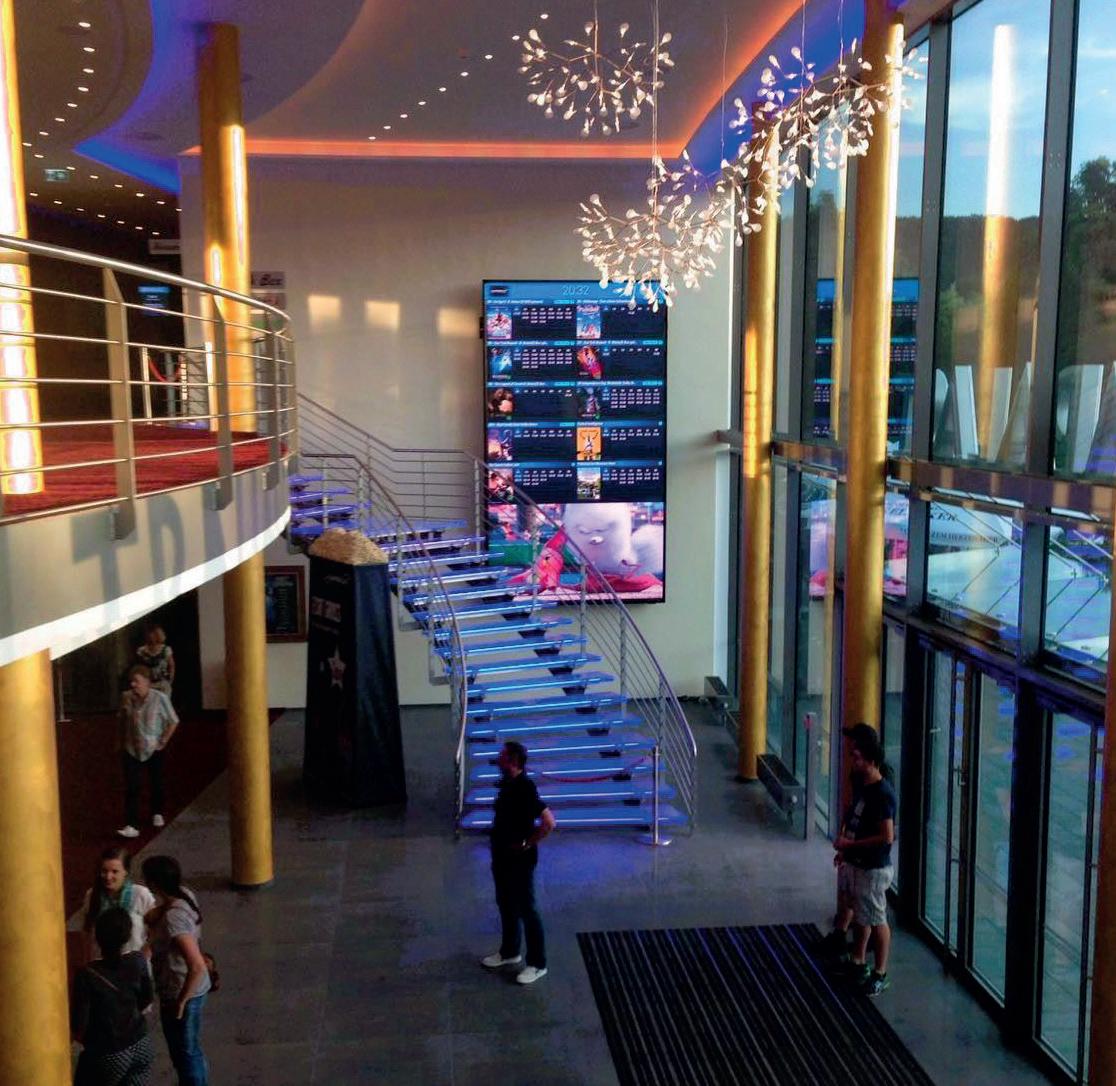
Using the system, it is possible to specify how many minutes before a show starts that the auditorium and building technology is required to start up and how long afterwards it should turn off. This can all be based on the POS data, allowing the system to perform the tasks independently, reliably, and on time.
Equipment shouldn’t be running when it is not needed. In the cinema, employees do not have to arrive early in order to start or preheat equipment. As a result, they do not need timers that require time-consuming reprogramming when programs change or during vacation periods. Depending on the interval between shows, the system can either leave the projector lamp on or turn it off and relight it.
One of the more original, unusual features of the system is the automation & monitoring functionality that provides building intelligence at a low cost. By connecting hardware across the cinema with the network it is then possible to switch devices
on and off, as and when required. The commands to do this can be configured in such a way that they can be triggered by a set of criteria being met, using the IFTT (if this, then that) approach.
Automation & monitoring continuously supervises the processes and workflows in the cinema. When a process does not run as expected, for example, the opening of a dowser or the ignition of a bulb, an employee can be actively notified via push message. Knowing this information - and if there’s a problem that can disrupt a film screening - will allow staff to intervene quickly, before guests notice anything.
Eikona offers a solution that sits over all cinema hardware and software tools and interfaces that are required to operate a modern and efficient cinema from a single integrated interface. No more jumping from one web browser application link to another - instead, all the data and information is there in one place. Apart from having this single interface to use, learn and interact with, as the system has access to all the other systems, the data available can be used to analyse issues and provide a wider and more comprehensive notification of potential issues or even help to resolve them in advance. Eikona’s solution is both a unique and powerful tool that is worth investigating further.

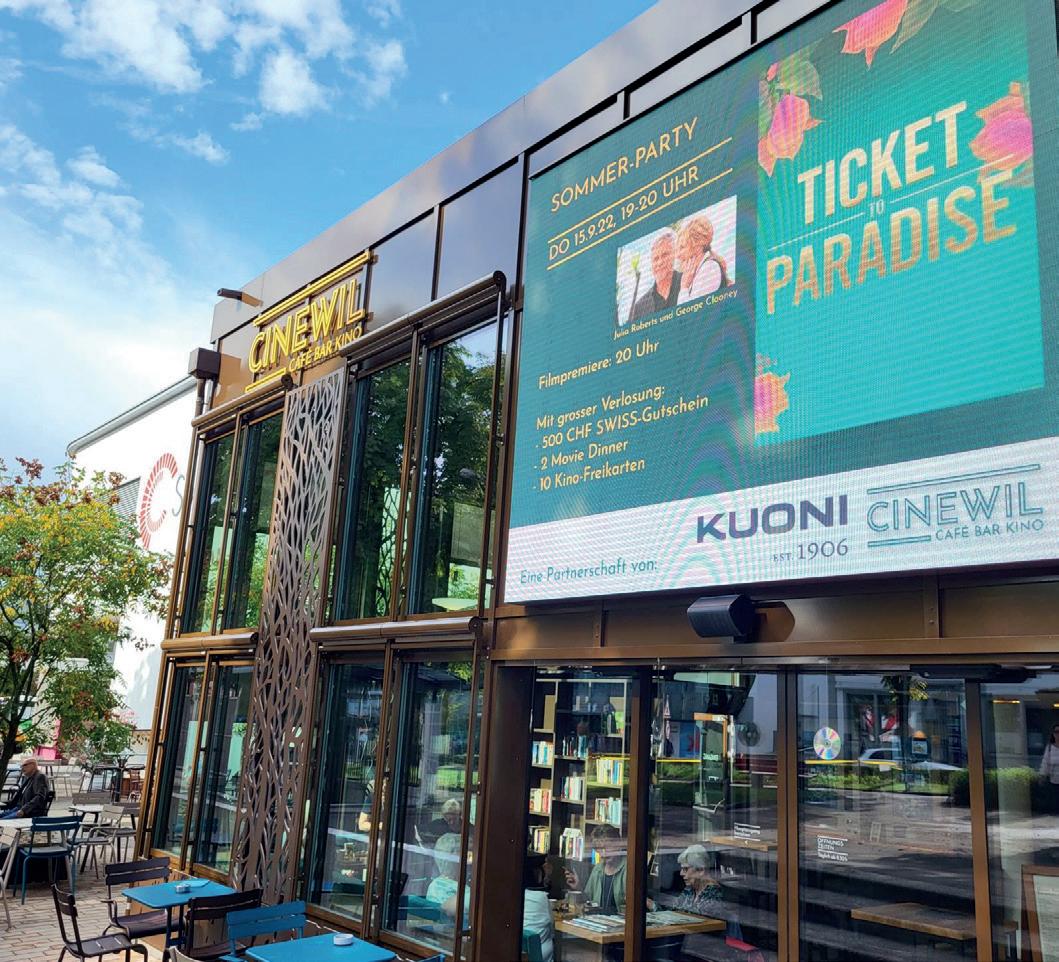
The success of “Avatar: The Way of Water” came as a relief to the cinema industry, from a revenue perspective, and for the general mood and positive mindset to take on future challenges.
But due to the temporary closures of cinemas during the pandemic, and the tendency for temporary workers in cinemas, many technical specialists and temporary employees have left the industry. Finding new staff is proving difficult and they first have to be trained in the complex technical processes that a cinema operation entails. This has increased the demand for solutions that automate and centralise technical operations to the maximum. We are currently assisting our existing and new customers in converting their operations from several technicians per location to a smaller team of highly qualified employees who control all cinemas in a country from a central technical hub. This reduces personnel costs massively, gives the operators a better overview, provides data from all locations that can be used for process optimisation and keeps long-term know-how in the company.
Furthermore, there is a focus on establishing a constant process chain. Often, even larger operators still work with Excel spreadsheets that various departments enrich with information and send on. This interrupts the digital process chain; sources of error cannot be identified, and head offices do not know whether the content that was planned is being shown on the screen or in the foyer. This process can be digitalised with our software across the entire process chain. We
communicate with all third-party software used by the operator, automate as much as possible and provide a proof-of-play at the end. While the aftermath of the pandemic is fading, the next challenge the whole industry faces is in full swing with rising electricity prices. The task now is to reduce electricity costs, as quickly as possible. Since purchase prices can only be influenced marginally, this can only be achieved by reducing consumption.
Our customers can use our automation & monitoring system to communicate with all the cinema equipment, including power circuits, network sockets and even HVAC systems from a wide range of manufacturers. Based on the show schedules and the exact course of the show from the TMS, we can thus ensure that equipment is switched off after use, restarted if necessary and monitored to see whether these processes are running successfully. If not, the relevant staff member receives a push message on his smartphone to intervene.
The hardware for switching the devices can be selected by the cinema operator himself and ordered directly or via his electrician. We do not tie our customers to a specific system and can often control existing hardware. The ROI for retrofitting is often less than a year, sometimes only months. Due to the increase in electricity prices, the demand for this module has once again risen sharply.
And so, we look forward to accompanying our customers on their journey and to facing the challenges of the future together.

Hailing from a film lab background, and a technical one at that, environmental change has been a hugely noticeable part of my career in the film and cinema industry. Remembering the amount of chemicals that flowed through the maze of pipework and then ultimately into the drainage system at some point
always disconcerted me. Hopefully I’m able to speak freely about this now, but there was a definite sense of unease with what was being sent down that pipe! I’m sure that everything was regulated and above board though, right…?
Technology and economic pressure have both made a radical and profound step change to the way the whole industry works, something I have certainly experienced
myself. The potential environmental savings from moving from celluloid film to digital was to come from a major part of the entire theatrical chain: the prints that were delivered to movie theatres. This part of the food chain has really seen a huge shift in the way that theatres receive their content, and, in the grand scheme of things, that process of change has - positively - been really quite quick
Let’s look at the position we were in for decades, and the more recent, associated change. Content would be filmed using literal film in a camera, then passed for processing to a film lab and printed by the lab for viewing by the film crew the next day; the original “dailies” process.
We then started introducing videotape for both shooting and dailies viewing, but the general release of the film itself still required a standard five or six reels of film that had to be transported to a theatre. There’s no doubt that for readers of publications like CT Magazine, there will still be many who miss the days of the production of actual film prints, though I think the look and feel of differing mediums is a different discussion to the impact of environmental change.
We are now very much on our way to worldwide IP digital download of content, after the interim phase of transporting physical hard drives for feature releases. But with it has come a - hugely positive - environmental change that, to me, doesn’t seem to have been fully registered. The environmental benefits of moving from actual film to electronic data has been enormous. Just think of the amount of plastics involved in creating film in the first instance, never mind the necessary transporting of film, and associated products, around the world.
The subsequent change from sending data on hard drives via planes, trains and automobiles to IP delivery, has seen another major step change. And I’m unaware of any real studies into what both of these changes have meant in terms of concrete reduction of carbon emissions. It may not be a necessary exercise now but I’m sure these figures would be fascinating to see, so please get in touch if anyone can help with where to find this information.
The driving factors behind most of these changes, in my opinion, have never seemed to come solely from a place of environmental improvement. I have strongly felt that we
should own, and be on the front foot with, this monumental change and it should be a major reason for why changing to IP delivery makes total sense. At Qube Wire (and no doubt other vendors) we have sometimes seen a reluctance, usually from exhibition, to change to the IP delivery method. Is this because our industry is sometimes slow and reluctant to change to anything? Or is it an economic factor, or even something else?
For those that are unsure, exhibitors very rarely pay for anything in the IP delivery chain and usually actually end up saving money, so the entire process ends up being a win-win for everyone concerned. If it’s something else that’s holding back the change, then I have yet to either find out or understand what is stopping us changing to IP delivery totally (where IP is possible, obviously).
So what does this mean in terms of green savings? Firstly, as mentioned, we have saved a huge amount in the way of plastics. In the lab on a good day, we were producing 4000 feet of print every minute - and that was just a single London lab. Figures from Kodak and similar companies must have seen an astonishing decline in production.
I will, unfortunately for some, still bang the drum about the environmental damage being caused by the aforementioned unnecessary transport of content. We should all make this an important factor in why we do what we do in developing cleaner and effective methods of content delivery. Finance and economics are extremely important in our precarious industry, as with all others, and worldwide. But let’s all try to make an impact when and where we can.
“ The beneficial change of moving from actual film to electronic data has been enormous. ”
 Tony Franks,
Tony Franks,
hen I set about writing a blog with the title “Cinema is Changing” late last year, I started with two paragraphs. One paragraph was about cinema being an inherently simple concept that, in its essence, will never change, all sparked by a visit to my local arthouse and a very personal experience; watching a film that I got totally lost in and completely resonated with.
The other paragraph was about the myriad of opinion and media commentary that has appeared in the last couple of years about cinema dying, evolving, transforming, or reinventing itself. Much of this opinion sprouted up from the backdrop of the pandemic which shuttered cinemas,
Where a new cinema is located, how its appearance is shaped and how it is fitted out could all be changing:
“I think the location of the cinema is changing again, it moved away from the high street for a while to out-of-town shopping locations. Many of these are now empty or not very busy and so many cinemas are now returning to in-town shopping centres. But beyond that, they are being used as key aspects of town centre restorations. Companies like the Really Local Group are also changing the way that cinema buildings are being used and how they interact with the local community.”
“LED technology is continuing to develop
worldwide, for weeks on end.
With these opposite points of view, I decided the main mission of the blog should be to gather opinions about the future of cinema in one place, from others in the industry. I wanted to gather opinion from lots of varied sources on this subject, to see if there was any consensus.
As a starting point for collecting these opinions, my recent rediscovery of social media (thank you, LinkedIn) has exposed me to many more industry commentators. These longtime observers of the cinema industry freely share clear views of the good and bad trends they see and I wanted to bring those thoughts together. I have my own experience in the industry - I run the website Screening Room Map, the online directory promoting private cinema hires - but I don’t generally offer the
and companies are looking to roll that out –there are pros and cons to this technology, but when this starts to appear in auditoriums it is likely to make a difference to what is thought of as cinema, probably more so than anything else we have ever seen in its history.”
“New technology like the GDC Supra-5000 projector [an ultra-small projector not requiring a dedicated projection room] is allowing cinemas to be built in places that would not normally, traditionally, be able to accommodate a cinema.”
“35mm and other celluloid screenings are now important again – retro is still cool.”
“There are more 35mm screenings each
week than five years ago, easily.”
“Pop-up outdoor cinema has never been more popular or available in more outdoor locations.”
“Technology in the auditorium like 4DX, ScreenX, and ICE Theaters to name just three continue to make an impact on the audience, especially younger audience members.”
same commentary as those who regularly post on social media. So I reached out to as many of these commentators as I could think of, asking if they wanted to summarise their thoughts on the subject of “cinema is changing”. To these people, and others deeply rooted in the industry, I gave the option of anonymous comments, hopefully making it easier to comment freely.
The blog was published in November 2022 and the hope is that it continues to grow organically in 2023, while gathering new additions in the background. Contributors included Patrick von Sychowski, Peter Knight and John Sullivan - full credits are on the post at www.screeningroommap.com/ cinema-is-changing. Here is a selection of the comments, grouped under four themes:
When cinemas closed during the pandemic, streamed content at home was embraced. But was that rise sustainable? And what is the backlash?
“Streaming is not the competition to cinema, people still crave the out-of-home experience.”
“Those people who were heavy consumers of streaming were also heavy cinema-goers as well.”
“Theatrical exhibition's struggles in the last decade are a result not just of competing against streaming and piracy, but of being in competition against the entire experience economy. Five years from now, there will be no place for lazy exhibition.”
The number of cinema releases has shrunk over the past three years and it's been commented on how films should be reshaped for cinemas: “What we don’t have currently is a staple feed of mid-priced original films that please audiences… we have plenty of half-baked content
to fill up the multiple home channels. But a key change is that the midrange films need to deliver stable underlying revenues for cinemas in an environment that persuades people that watching in social surroundings is worth turning up for.”
A common theme of the feedback received was the premium positioning of cinemas. Quentin Tarantino addressed this in an article for The Hollywood Reporter, titled “In the Near Future, Boutique Cinemas Will Thrive While Big Chains Flounder”: “Cinema will become more experience and premium driven.”
“Hospitality should be reflected in private hires –whatever can be done to improve the guests’ and organisers’ experience is key,
whether it’s improved tech, via the booking and pre-event process, or the experience for everyone on the day.”
“…the likes of Everyman, especially, at least try to offer a premium experience and their whole business model is to ensure customers go home happy.”
“The premium cinema [experience] is not just an improvement of the film offer, but rather an expansion of the concept of the movie theatre, which goes from being a place to simply watch a movie in, to a cultural hub, a place to spend time even without watching movies, a place where humanity and ideas can come together.” (Domus Magazine).
For 2023 the number of cinema releases looks to be increasing. Content provision will help the recovery in exhibition, but it looks like longer-term changes to the industry are also taking place. New viewpoints added to the blog - on sustainability, consolidation, and whether a gap/opportunity is left at the lower end of the market, with any shift to premium boutique cinemas - would be welcome additions.
Tony Franks gathers industry views, opinions and feedback to find a consensus on the future direction of cinema.

Sandie Caffelle journeys down under and talks to Deanna Wallis to learn more about Wallis Cinemas, the family business based in and around South Australia.
CT: Wallis Cinemas is celebrating its 70th birthday this year. Tell us how it all started. How has the company grown over the years?
Wallis Cinemas
Wallis Cinemas, formerly Wallis Theatres, is a family-owned South Australian company that operates cinema complexes, cinemas and drive-in theatres in greater Adelaide and regional South Australia.
In 1950 my great grandfather, Hughie Wallis, founded Wallis Refrigeration Services, developing and engineering fridges and washing machines in an industrial warehouse (we still have two of his fridges which are in operational condition!). During this time, Hughie discovered his love of film and, as a hobby, started screening films at local RSL (Returned Services League) halls for the community. His passion grew from screening Hollywood classics in community halls to opening the first South Australian drive-in cinema – the Blueline at West Beach – opening in December 1953. What followed was a stream of drive-ins across the city from Gepps Cross to Christies Beach, Modbury, Panorama, Mitchell Park, and Outer Harbour and out into country towns like Renmark, Loxton, Clare, Nuriootpa, Barmera and Berri. Some South Australians still remember the kiosks, the playground, and even pony rides for the kids! 1971 saw the development start on Adelaide’s first multi-screen cinema complex at Glenelg, with the family leasing the Marryatville Ozone site (Chelsea), and by 1976, the building of the Academy Cinema Centre right in the heart of town.
Prior to Hughie’s death in 1994 he had added the historic Piccadilly Cinema and the brand new Noarlunga complex to the impressive stable. The reins were handed over to Hughie’s son, Bob, (my granddad) whose passion for entertaining South Australians was as great as his father’s. In 1999, Bob purchased the former Barr Smith Residence, Auchendarroch House at Mt. Barker, and set about restoring it to its former glory as well as adding a tavern
and seven-screen cinema complex to accommodate the rapidly growing area.
In 2007, the opportunity arose to play a part in the redevelopment of Mitcham Square Shopping Centre and the Mitcham Cinema was born. Unfortunately, Bob passed away in 2007 without seeing this development finished, but we know he would be very proud of it today. The company has remained in the safe hands of Bob’s wife, Lorna (my nanna), their daughter, Michelle (my mum) and granddaughter, Deanna (me). We work tirelessly to keep the Wallis family dream alive and to continue to entertain and employ South Australians - and a few Victorians [the southeastern Australian state] too, after adding the Mildura Cinema to the stable in 2017!

CT: Wallis is very much a family affair and you have many long-serving employees. What do you do differently to other organisations to keep them happy and ensure they stay?

I think what keeps employees with us for a long time are our family values and strong sense of community amongst our employees. We appreciate every single team member - it doesn’t matter if you’re a cleaner, usher, head office personnel or owner, we’re all in this together and everyone’s role is integral to ensuring the success and longevity of our business. We have multiple employees who have served us for over 30 years which is just mind blowing! So it definitely is like an extended family who have been through, and seen, so much with us. These long serving employees have worked with every single generation of the Wallis family, including my late Uncle Darryl who also worked at both The Glenelg and The Academy for many years.
CT: Tell us about your collaboration with Krix and Trinnov and the newly-installed Quake Sound in your theatres?
Quake Sound is a Wallis and Krix initiative, breaking the barriers of cinema sound with the latest speaker and digital audio processing technology.
A 7.1 system at heart, Quake cinemas utilise the worldleading Trinnov Ovation processor to phase-correct, time-
align and equalise the sound across 19 speakers and 10 subwoofers, for an absolutely epic cinema experience. It provides clarity and responsive sound like never experienced before at the movies.
Quake Sound is the latest cinema upgrade for Wallis Cinemas at Mitcham, Mt. Barker & Noarlunga. We’ve combined the latest Trinnov Audio digital processing technology together with the speakers and subwoofers to deliver crystal clear sound with deep, captivating bass.

CT: What future plans can you share with us that you’re excited about at the moment?
We’re really looking within our four walls and what experiences we can do better at. Food & beverage (F&B) offerings are becoming extremely important in cinema with many exhibitors prioritising that. People are now after the whole package experience and we are creatively analysing behind the scenes how we can deliver just that. We are also exploring seating offerings and increasing our function and event capabilities.
Four subwoofer speakers behind the screen and six subwoofer speakers distributed around the auditorium for enhanced surround sound.
Each speaker in the auditorium, including the front screen speaker, can channel low, mid and high and is driven by its own separate amplifier.
The Trinnov sound processor precisely controls the timing of all sound frequencies to arrive at the listener’s ear at the same time, resulting in a much crisper, clearer sound.
A/D signal-to-noise ratio: 119 dBA, THD+N: -103 dB.
Independent power supplies for audio & processing sections.
1 2 8 3 4 6 5 7
A/D signal-to-noise ratio: 119 dBA, THD+N: -103 dB.
Advanced jitter rejection technologies.
64-bit floating point processing
AUTOMATIC EQ
Trinnov simplifies and improves the whole room equalisation process. The screen channel loudspeakers are Krix KX-5986, 4-way tri-amped.

I’ve always admired those lucky enough to make their passion their work. After 10 years working across multiple industries and disciplines in marketing, I wanted to work for a values-driven company that offered the possibility of being fully remote
When standing outside my first studio presentation at my first CineEurope in June 2022, my colleagues hadn’t arrived yet and I didn’t know anyone, so I just stood in the back as an observer, feeling slightly intimidated.
And when I first interviewed with DX, I was immediately drawn to the customer base: cinemas. The cinema industry has always had a sort of twinkle in its eye. And when it comes to people who make their work their passion, this statement is particularly true, or so I would come to learn.
What I saw, however, made me feel more at ease. People were embracing after two years of not seeing each other, there were smiles and a pervading sense of friendliness; I felt like I was looking into a room of genuinely nice people, which is not a sentiment I have always felt in the past. Yet the world of cinema, Hollywood, and the red carpet are not short of prestige or intimidation for a newcomer.
Sitting through my first studio presentations, I felt a sense of deja vu. An inspiring industry with years of experience, yet a certain hesitation to change. Studios presented their products with great pride and the audience was clearly excited by what they saw. Yet the conversations I had with several cinema managers afterwards revealed that they felt the product on offer just wasn’t enough to strengthen and solidify the future of the exhibition business.
Can each individual cinema consider itself a “brand”? I certainly think they can. While the word brand may seem tainted, it’s more important now than ever to stand out. Cinemas can embrace this by simply leveraging their logo, creating an atmosphere specific to them and what they offer, and elevating those two components (I’ll call it their ‘brand DNA’) in everything they do.
So, what exactly does that mean? A few independent cinemas come to mind. The brilliant Mandy Kean from Mustard Studios already brought our attention
when I set out to define my next professional adventure after becoming a mother, and in the middle of the pandemic.
Walking out of CineEurope, and rounding up my fourth month in the industry, I had a sense of clarity. It’s not about streaming versus the big screen.
In fact, “recent research suggests that, for young people, viewing film on SVoD platforms is complementary to seeing films in the cinema” (BFI, Audience Report, 2021). What we’re actually talking about is the fight for people’s time. Generation Z now makes up 40% of global consumers and holds the keys to earnings of about $7 trillion. By 2031, their income will reach $33 trillion (27% of the world’s income), surpassing millennials (Adage, October 2022). 2031 is in 8 years! So as I’ve said to many executives in the past, I say to cinemas, “If you’re not marketing to this audience today, then you’re missing out on the world’s future main purchase power.”
This brings me to what I have observed as an obvious gap in the industry: the gap between exhibition and distribution, two of the main parties that make the cinema world go round. Exhibitors rely on product and marketing materials received from distributors. And distributors rely on audiences going to the cinema, in large part as a result of exhibitors’ efforts. One simply doesn’t function without the other. Yet there seems to be little dialogue when it comes to marketing input between exhibition and distribution. Or, perhaps the dialogue is there, but it’s not making its way to the
people who need to hear it.
This is not unfamiliar territory to me. Legacy brands and industries somehow often fear what they don’t know. When I started my career, it was ‘digital’, and now it’s ‘virtual’. The reality is that the cinema industry, like every other industry, needs to pivot and redefine the customer experience across the physical and digital channels, and at the very least, be thinking about the virtual experience in parallel.
McKinsey & Company revealed how “brand” has gained presence over time in their latest trends report. To give a short synopsis: marketing has evolved from mass media to personalization with new ad products and the internet. Today, it’s all about reaching a community of people. A tribe driven by their passions. Speaking to them in a way that resonates with those passions is the only way to get them to listen. Zoning in on the “hero” product and why it’s relevant to them specifically. And expressing distinctly what your brand stands for. In other words, it’s not enough to tell someone “check out this great film”, but rather “check out this great film because it will speak to your love of [insert passion point].”
How can one do that? The answer is content and marketing. The cinema marketing model has to evolve in the values-driven era and there are some easy wins that cinemas can implement to make that happen. I’d like to share five here:
to the unique cinema and experience offered at NYC’s Metrograph. This cinema takes the old Hollywood theme and applies it to everything they do. Whether inside the physical cinema or on the website, the universe they have created is the meaning of a true brand.
A more relatable example that can easily be replicated even by smaller cinemas is Norway’s Lillehammer Kino. The cinema logo is present on gift bags at cinema events, on their social channels, and pretty much everywhere the cinema experience comes to life, online and offline. And it’s truly recognizable, highlighting the power of a well-thought-out logo.

Having an identity is great, but if no one appreciates or experiences it then the effort is in vain. That’s why being on social media is so important.
Cinemas don’t have to be on every single channel, but it’s important to be active on at least one. It’s a place where your online community can congregate, communicate and unite, find out information, and also, drive word of mouth. Ideally, you’d want to be present on at least Facebook, Instagram, and TikTok, but it’s better to do it right on one channel, then to be inactive on several. A lot of cinemas struggle to be active on social media due to lack of staff or resources, so look at how you hire - hire people who are also good at creating content. Chances are your Gen Z concession employees are active on TikTok. Why not make it part of the recruitment - or even the daily work - process? They may even feel more engaged in their jobs if they feel they are making a difference.
Having a visual identity, and the right social channels, requires thinking about the type of content you want to put out.
This is where marketing trends come to good use. People want personalized content that speaks to them. One success story that comes to mind where distribution and exhibition partnered to create glocal (global & local) marketing is Universal’s “Minions: The Rise of Gru”.
The perfect balance between distributor-provided assets and locallygenerated content came to life with this film. The campaign was so successful that #gentleminions garnered over 5 million views on TikTok and young moviegoers dressed in costume to attend screeningsthere was even backlash due to this trend because people took it to another level and moviegoers’ behavior was not always appropriate. While the latter is not ideal, this case study does show the power of user-generated content.
Some movie theaters even capitalized off the back of this trend by hosting special event screenings where audience members were encouraged to dress up and share their outfits on social media, but also were guided towards more
appropriate moviegoing behavior. The cinemas that jumped on this understood the power of personalizing content to their audience. Some cinemas turned it to their advantage, and got into the conversation.
A great example of this comes from the Omniplex Group in Ireland, who leaned into the #gentleminions craze Banning a trend will only result in people not returning to your venue, so finding ways to embrace the trend and drive the conversation locally will reap rewards, instead of just ignoring it.
The #gentleminions example also highlights the benefit - and power - of when studios lean into teeing up movie promos and throw their weight behind them, often resulting in them going viral. The best example that comes to mind is recently released sci-fi horror “M3gan”. Studios changed the movie trailer music to something that was already trending on TikTok and social media. This shows the value in cinemas being nimble, and acting quickly to tap into virality if/when it hits at the studio level.
A counter example to the above would be marketing “done wrong”. A film like Ridley Scott’s “The Last Duel” being
somewhat of a flop, despite its all star cast and direction, can only be blamed on an inefficient marketing strategy and a lack of thought for what local audiences actually want. The film generated $30.6 million at the box office while costing $100 million to make. This has nothing to do with devices or people using mobile, as some press indicated, but rather the lack of delivering information that people actually engage with.
It’s important to not only deliver personalized and local content, but to think about the full experience, both online and offline. It’s great - and important - to show good content, but if I click on something that takes me to a website with a bad user experience, I’m not going to be any more bought in than before.
So what’s the virtual version of greeting your customers with a smile? This is not something cinemas can do on their own and we think about this a lot when building the DX platform. Your website
is your digital store window and it’s important for it to be as enticing as the front of your physical cinema.
How to engage an audience has evolved with new channels emerging and the impact they have on the customer journey, from when an audience might start thinking about a film to when they will actually be in the movie theater to watch it. Cinemas need to think about how to engage audiences before, during and then after a screening, thinking about long-tail engagement and value.
results. Clarissa Bergh, Cinema Director, personalized distributorprovided content on her social channels, applied smart marketing to create buzz around the event one month before, included her cinema’s branding on the goody bags for the event, and created an event that ended up turning into a monthly Ladies Night series.
The results spoke for themselves. The cinema sold 50% of the first screening room tickets one month before the event, which was a first. Three rooms sold out, 220 tickets were sold, the cinema ranked in the top 10 for this film (it usually ranks in top 20), engagement was unlimited across social channels, and they saw a boost in bar and concession sales on the night of the event.
We have all seen the success of event cinema in recent years, and the reason behind it is clear: it takes the movie-going experience beyond the product and provides a whole journey to the movie-goer.
Tools like Facebook Events drive audiences for a specific screening, and not only for big blockbusters. Lillehammer Kino used Paramount’s romcom, “Ticket to Paradise”, to test this strategy and saw tremendous

Other great examples of this, and the other four strategies outlined, include Dublin’s Light House Cinema, which hosts a cinema book club that screens the best book-to-film adaptations and seamlessly showcases the information on their website.

And we saw tons of cinemas around the globe embracing experiential marketing with “Top Gun: Maverick” in 2022. Of course, Tom Cruise traveling the world to attend premiers and promote the film was a huge boost and marketing effort in itself, helping several cinemas to drive audiences.
Overall, the future looks bright. An increasing number of cinemas are experimenting with experiential marketing to create a full event around the movie-watching experience. And there will be a shift in the industry; the question is not if, but when.
But I believe that if cinemas continue to stay on top of customer behavior trends, building marketing strategies accordingly, providing a unique experience for the movie-goer both online and offline, then we’re sharing the driver’s seat with the audience. And together, we can take the industry forward.




Rühl (PwC UK) and Madeline Bates (StoryFutures Academy). Running throughout the conference there was also an area to have a hands-on try of some of these technologies. Day one concluded with a networking session at the marvellous Dundee V&A museum.

This Way Up is the UK’s only independent film exhibition conference.
2022’s event was produced by Film Hub Scotland and Film Hub North as part of the BFI Film Audience Network (BFI FAN), with support from Film Hub Midlands, Film Hub South West and Film Hub Northern Ireland. Here is a brief, non-exhaustive, look at some of the topics covered in the conference.
Starting the conference was a presentation by Ben Luxford, BFI’s Head of UK Audiences, who outlined the BFI’s new 10 year strategy, Screen Culture 2033. This set out how the BFI intends to advance its knowledge, collections, programmes, National Lottery funding etc. over the next 10 years. Of particular interest to the exhibitors present was the opening of new funds from April 2023.
“The Business of Culture” was a panel session with Joan Parsons (Queen’s Film Theatre, Belfast), Anna Germanidi (Modern Films) and filmmaker Hope Dickson Leach, and was chaired by Paul Gallagher (Glasgow Film: GFT). It explored how we can continue to maintain
and improve the cultural value of cinema while faced with funding cuts, rising costs and the cost of living and energy crisis.
An interesting idea was presented by Ian Wild (Showroom Cinema, Sheffield) along with Thomas Hosman (Cineville) based around a subscription service operated by a group of cinemas with the aim of attracting younger audiences, increasing admissions, encouraging more adventurous film choices and supporting smaller venues. In particular, Hosman explained his findings from an EUbased scheme already operating, whilst Wild suggested how it could work in the UK.
The next panel - Julia White (HOME, Manchester), Stewart Terry (Broadway, Nottingham) and Carmen Slijpen (Depot, Lewes) - discussed how environmental strategies and policies of individual exhibitors not only translate into their day-to-day programming and operations but also inform and shape their communications with staff and audiences.
Looking to the future, a panel discussion on immersive, augmented and virtual expanded realities (XR) discussed the role they could play within traditional cinemas. Guest speakers included Amy Rose (Anagram), Alex
Day two commenced with a discussion entitled “Opening Up the Archive”. With national and regional archives increasingly opening up collections to artists who have reimagined the material in new works, younger audiences are now showing a greater interest in film heritage. The panel consisted of Lauren Clarke (Invisible Women), Andy Robson (Film Hub North) and Rose Baker (Belfast Film Festival) and was hosted by Isra Al Kassi (T A P E collective). A series of short presentations followed, focusing on the important topic of accessibility. These included the Sidecard database of accessible film materials (presented by Toki Allison, Inclusive Cinema); WelcoMe by Neatebox (presented by founder Gavin Neate), which helps to remove barriers between cinemagoers and front-of-house teams; and the wearable tactile hardware Subpac (presented by Stephanie Tyrrell, Sense). An open-round discussion followed, led by access consultant, Charlie Little.
Some short films were screened throughout the two-day conference, namely, “Candy”, “Held”, and “A Different Place” on day one, with “Jackdaw”, “The Piss Witch” and “The Wilds” on day two.
Overall, This Way Up 2022 was an excellent conference providing a wealth of information for exhibitors - and I haven’t even mentioned the brilliant projection room tour (which is a museum in its own right)!
Supplying international cinema multiplexes for over 40 years and featuring in over 4000 screens worldwide.

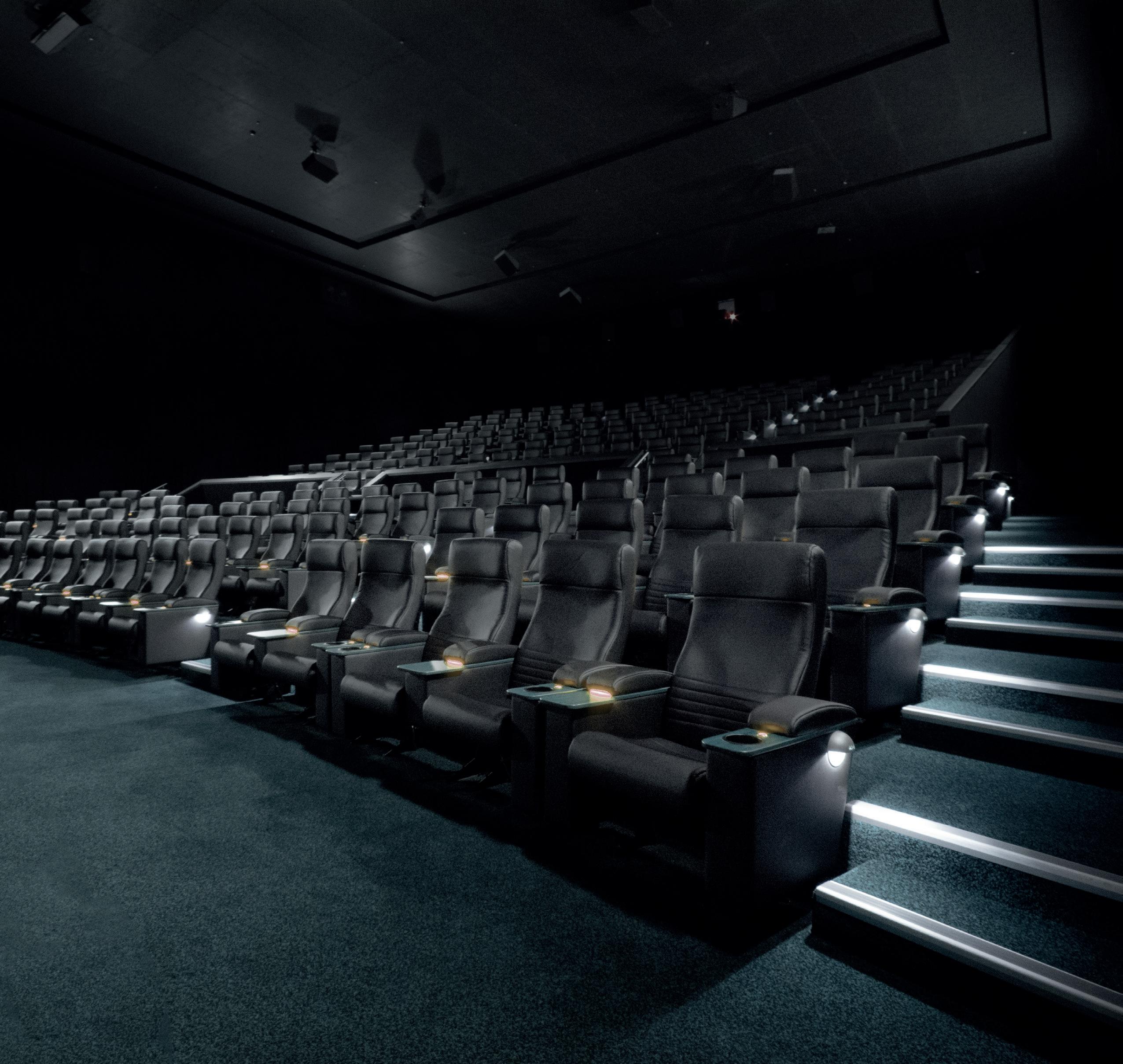
Krix commercial cinema speakers provide a vast, immersive sound with optimum dispersion, vocal intelligibility, and responsive bassensuring every movie soundtrack is delivered with clarity, control and effortless power.


For the ultimate cinema experience, play it through Krix.
krix.com/cinema
CinemaCon hosts the world’s largest cinema exhibition tradeshow

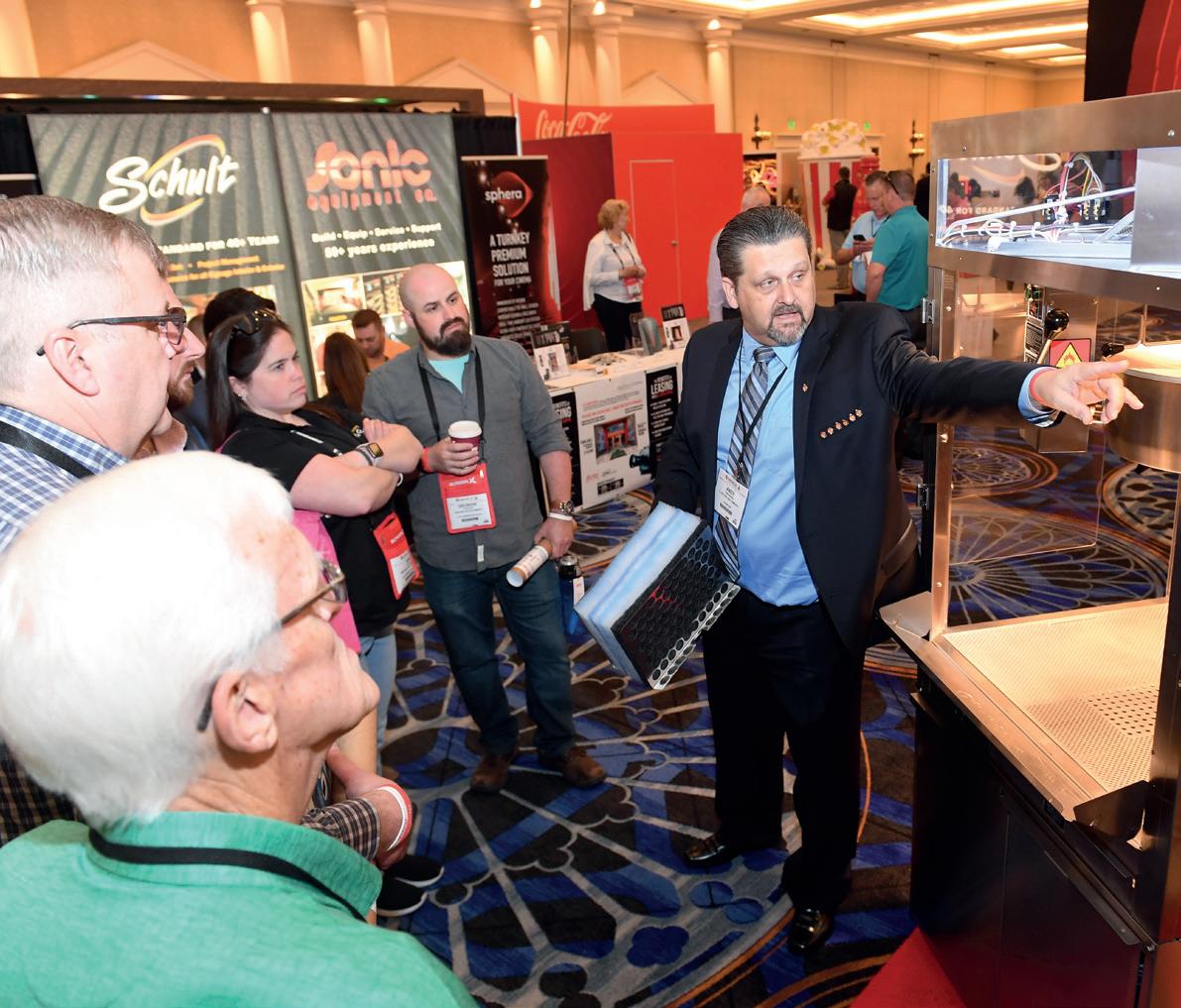
Caesars Palace, Las Vegas: 24
April – 27
April 2023
After a buoyant end to 2022, the upcoming industry extravaganza that is CinemaCon 2023 promises to be one of the best and most important shows in many years. With the industry seemingly finally on the other side of the pandemic and in recovery mode, this show will set a direction for the future of the cinema experience.
This year, the eleventh edition of CinemaCon returns to Caesars Palace in Las Vegas from 24 April – 27 April 2023 for what NATO, Mitch Neuhauser and his team promises
to be their biggest convention to date.
The CinemaCon schedule will once again be broad, diverse, educational and fun, and will feature the largest cinema trade show in the world. It will appeal to and attract all facets of the international cinema industry — exhibition, distribution, marketing, publicity and advertising. And, of course, equipment and concessions manufacturers and dealers who will showcase the latest technological advances and innovative offerings at the trade show.
The show will once again kick off with International Day which features a look into global territories, this year with insights from industry executives from around the world. Already revealed are a number of sessions surrounding digital strategies including how to reach movie-goers, and indeed potential movie-goers, through digital channels such as TikTok, Facebook and Twitter. And, of course, International Day wouldn’t be complete without its annual awards ceremony and lunch where the best in international exhibition and distribution are honoured.
To finish the day, the success
global Cinema Day events from around the world will be examined, as well as the opportunities these present to engage with movie-goers. And the theme of movie marketing runs right through the show with a session on Wednesday, highlighting the opportunity to make the cinema the local community cultural hub and how this can have a significant impact on driving revenue. There will, of course, be a number of cross industry sessions looking at market dynamics, concessions and technology too, with a number of sessions still to be announced.
The slate for 2023 offers enormous excitement for movie-goers and the industry, and CinemaCon will once again deliver a series of studio slate presentations showcasing upcoming content, no doubt with the usual smattering of movie stars. Already confirmed to present are Sony Pictures, Warner Bros. (celebrating their centenary year), Walt Disney Studios, Universal Pictures and Focus Features, Paramount Pictures and Lionsgate, with doubtless more to be announced in due course.
All the major keynotes and slate presentations will once again be held in the Colosseum, the largest and most impressive temporary cinema conversion in the world (in our humble opinion). Chapin Cutler and the team from Boston Light and Sound, along with Steve Oliker, will work their magic once again to deliver a state-of-the-art auditorium featuring the latest technology offerings from Cinionic and Christie, Harkness Screens, GDC, QSC and Dolby. The Colosseum experience never ceases to disappoint, just remember to keep your phones in your pockets during the presentations.
All main slate presentations and keynote speeches are hosted in the Colosseum auditorium
The third anchor of the conference is the annual trade show, a chance to meet with manufacturers of concessions and equipment, software suppliers, integrators, installers and architects/designers. CinemaCon is the annual showcase where manufacturers typically bring their latest offerings and with that renewed industry confidence, we’re expecting to see some exciting innovations. We’re excited to see the trade show halls looking busier than the last couple of years, showing that money is once again trickling down the ecosystem.
Of course, there remain challenges for equipment manufacturers with component shortages affecting lead times and availability of products. This will doubtless be a hot topic throughout the show as exhibitors search for answers as to how they should manage and maintain their existing technology infrastructure whilst reducing energy costs and planning for the future.
Of course, sustainability (which is the theme of this edition of the magazine) will doubtless be on everyone’s lips, both with technology manufacturers but also with concessionaires. We expect to see some interesting innovations surrounding food and beverage service with a focus on waste reduction and sustainability.
Underpinning all of this is the networking opportunity the event presents, something the industry hasn’t really been able to do properly since 2019. The big events are back in full force and there will be plenty of opportunity to meet colleagues and make new connections throughout the show. Whether it’s studio parties, industry lunches, breakfasts or private parties, the show promises to be vibrant with much to discuss - but just remember to pack headache tablets.
More information regarding the upcoming show can be found at www.cinemacon.com, including the latest schedule of events and trade show floor plans.
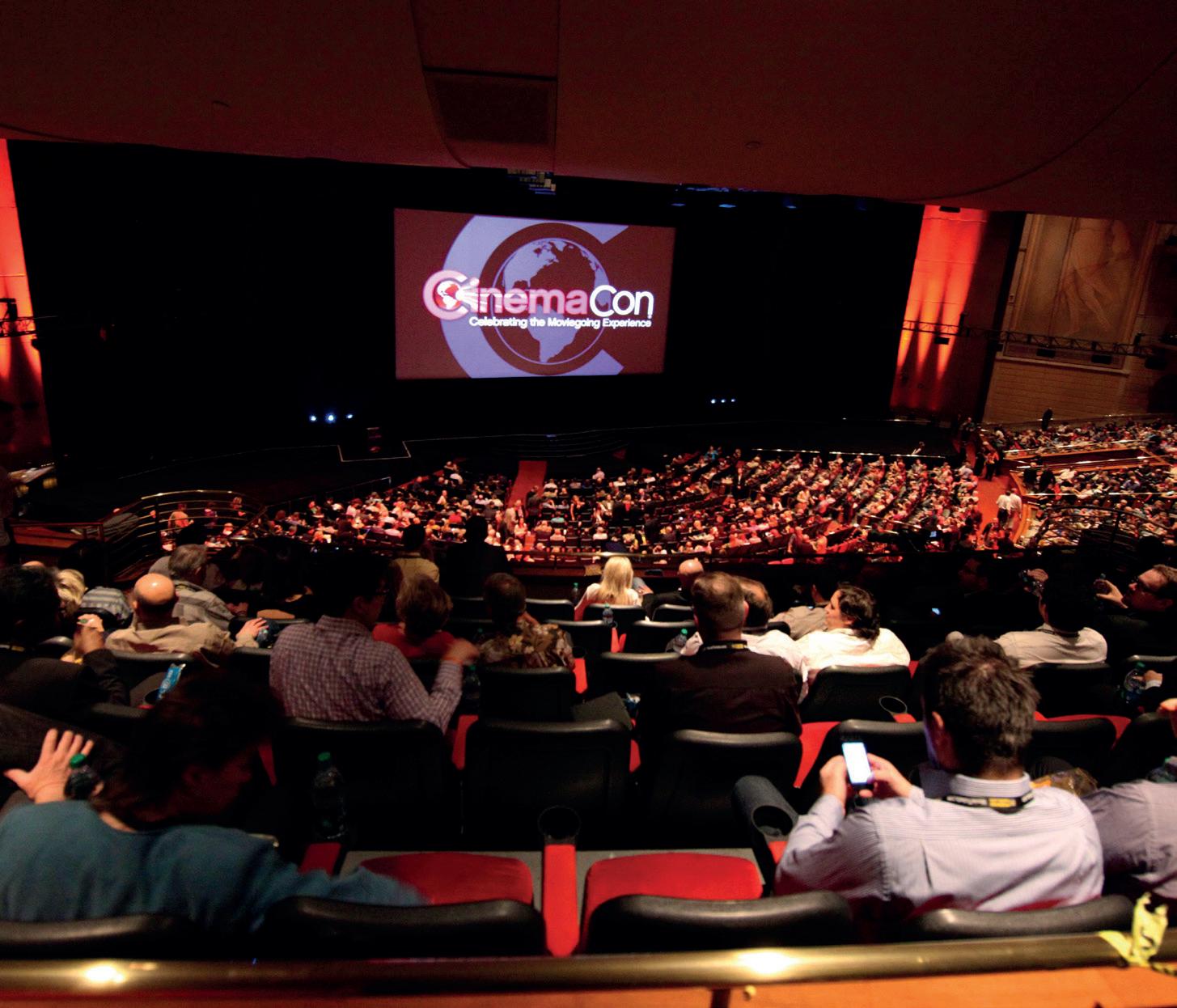
During CinemaCon, you’ll have an opportunity to meet CTC’s sponsors and find out about their latest innovations. Here’s where you’ll find them: NAME
CHRISTIE DIGITAL
FERCO SEATING
HARKNESS SCREENS
You’ll also be able to find updates from our non-exhibiting sponsors, either via their websites or by arranging a meeting with their representatives at the show: Admit One (www.
admit-one.co.uk), DX (www.dx.tech), RealD (www.reald.com), Audio Distribution Network (www.audionetwork.de) and Compeso (www. compeso.com).

Afull house attended the Empire Walthamstow, London, for the Event Cinema Association’s (ECA) annual slate day, now comfortably back in its January calendar position. Organised by ECA Director, Grainne Clarke, one of the most notable things was the anticipated return to content pipeline normality in 2023 for the event cinema sector. Much like mainstream content that has shifted repeatedly over the last couple of years, the sector has had a similarly challenging time, with the pandemic putting paid to any release schedule consistency. And due to this, as well as significant landmarks like the ECA making it to the grand old age of 10, there was a palpable sense of positivity present throughout the day.
Luke Williams from Comscore began
proceedings with an overview of looking back at the 10 year journey of event cinema and where we are now, broken down by territory, with some interesting highlights - to name a couple, the interest in and success of genres such as K-pop and faith-based content. And, of course, the out-and-out success of theatrical screenings, with NT Live’s “Prima Facie” - the one no one’s quite sure how to pronouncebreaking the impressive record set by the same distributor’s “Fleabag” in 2019.
The 10th anniversary was, of course, a key feature of the day, and, as such, Founder & former Managing Director, Melissa Cogavin, was in attendance to give the keynote welcome speech in the morning. Cogavin’s keynote summarised her time in birthing and growing the ECA after a career “studio-side”, alongside getting around the various
challenges she had to navigate; and one of her main highlights of unearthing and bringing together a whole new supportive, exciting community. After achieving what she felt she needed and wanted to, Cogavin officially handed over the reins to Clarke in October 2018.
The first (and only) panel of the day, titled “The Evolution of Event Cinema: What Happens Next?” and chaired by Powster’s Michelle Stevens, was formed of panellists Caleb Johnstone-Cowan (Odeon, UK), Leo Jordan (NT Live, UK), Camilla Baier (Indy Cinema Group, UK) and Matthew DeVuono (Cineplex, Canada).
The panel touched on their thoughts and experiences with the traditional event

cinema model - the “one-night-only” approach - with Jordan saying NT Live’s preference was to give audiences more viewing choice, with DeVuono countering, saying he still found the exclusivity of this methodology “sexy”.
Tribute was paid to distributor Trafalgar Releasing and others, who, along with counterparts and peers in the industry, have demonstrated that hard work over the last few years can, and have, taken the event cinema genre from the release schedule periphery to peak cinema viewing times. This was nicely proven by the recent “Billie Eilish: Live at the O2”, screened in a primetime Friday evening slot in January.
Travelling east around the globe, Japanese genre, anime, had a big presence during the panel - and throughout the whole day - after exhibitors have seen huge success with big hitter films over the last couple of years like “Jujutsu Kaisen 0” (global box office USD $196.4million), “One Piece Film: Red” (USD $246.5million) and “Demon Slayer” (USD $506.5million).
And it wouldn’t be right for this writer - and huge fan - not to mention the global, frankly bonkers, rise of K-pop boy band, BTS, in the event cinema arena. Their repeated successtheir latest “BTS: Yet to Come in Cinemas”
After a good selection of meaty slate presentations from a wide range of distributors and ending on a definite high with Trafalgar Releasing, came the awards section of the day, sponsored by The Coca-Cola Company. But to celebrate the association reaching double figures, the awards were put together slightly differently this year, with several awards looking back over the last decade, having been voted for by members and colleagues in the industry in the run up to slate day.
Congratulations to all award winners, who were as follows:
BEST EVENT CINEMA DISTRIBUTOR: Piece of Magic Entertainment
BEST EXHIBITOR: Vue International
BEST TECHNICAL SUPPLIER: Deluxe
BEST EVENT CINEMA TITLE OF THE LAST 10 YEARS: NT Live’s “Fleabag” And the best performing pieces of content from 2022 were also
broke more global records - with live and prerecorded concerts streamed to cinemas, shows the sheer dedication of their fanbase (“ARMY”) to boost the profile of the band around the world. Prior to the panel commencing, Stevens made mention of a photo booth image generator developed by Powster, specifically for BTS fans in the run up to their cinema events - I, of course, have tried it several times.
recognised for their outstanding performances, altogether amassing a global box office of USD $263million:
BEST CONCERT: “BTS – Permission to Dance on Stage” (USD $32.6M)
BEST THEATRE PLAY: National Theatre’s “Prima Facie” (USD $7.2M)
BEST BALLET PERFORMANCE: Royal Opera House’s “The Nutcracker” (USD $1.4M)
BEST ANIME: “One Piece Film: Red” (USD $219.1M)
BEST ESPORTS TITLE: League of Legends World Championship 2022 (USD $950k)
HIGHLY COMMENDED EVENT OF 2022: “Indochine - Central Tour in Cinema” (USD $2.3M)

And so, we look forward to catching up about the event(cinema)ful 2023 in January 2024.
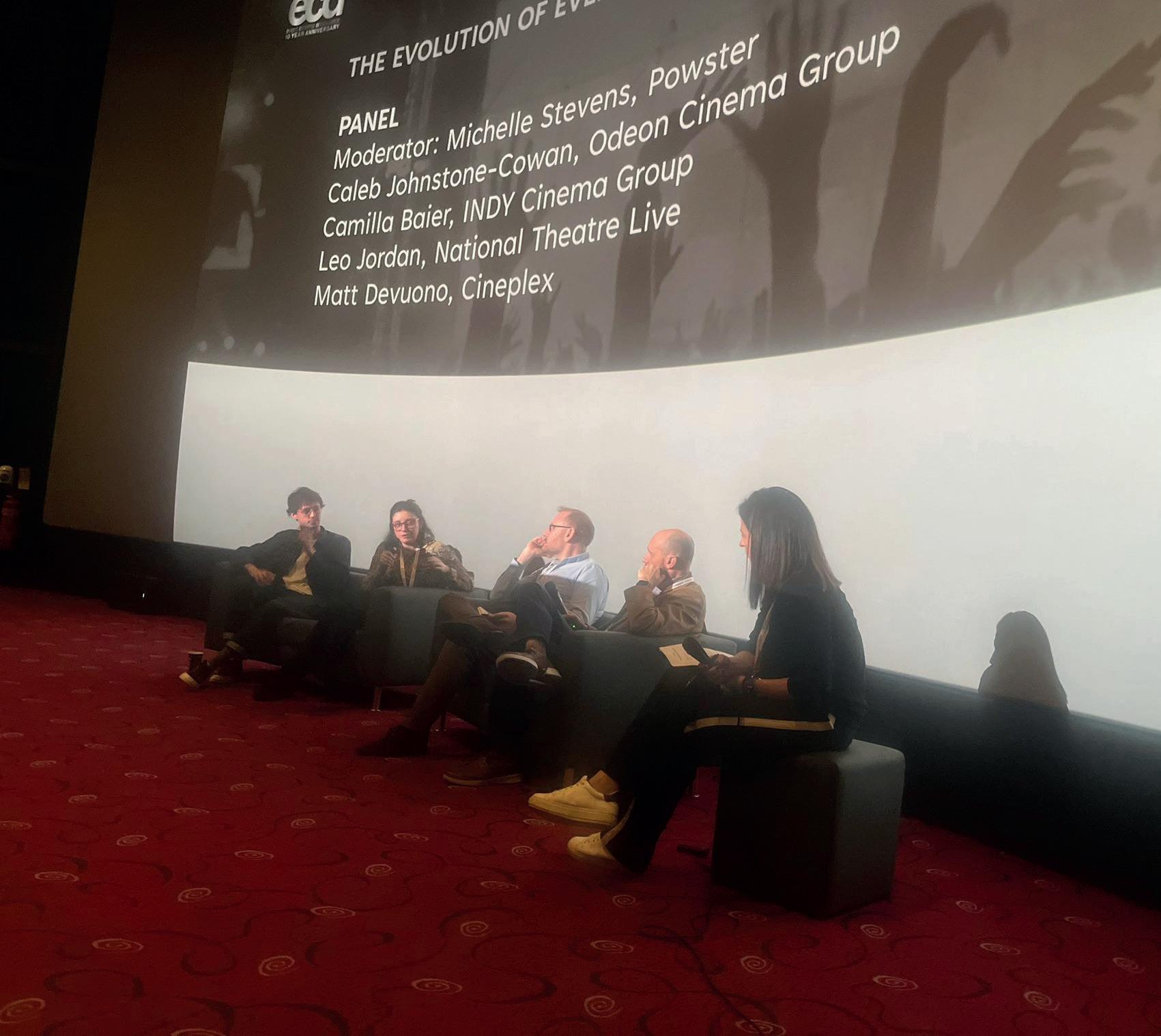
“The Evolution of Event Cinema: What Happens Next?” panelAn expectant audience at the ECA Slate Day 2023
19-22
JUNE 2023




CENTRE CONVENCIONS INTERNACIONAL BARCELONA (CCIB) CONVENTION & TRADE SHOW • CINEEUROPE.NET






OFFICIAL CORPORATE SPONSOR












































SUSTAINABILITY and energy consumption is a prominent issue in the cinema industry right now and it isn’t just an economic argument but a moral one too. Across this edition of the magazine, through recent industry web seminars and regional trade events, the importance of sustainability is growing, driven by an increasingly conscious consumer.
At CTC, we’ve aimed to operate as sustainably as possible since our reformation in 2017, hence why we’ve always placed such a strong emphasis on our online presence and serving our growing community with electronic-first deliverables. That stretches all the way from our white papers and video seminars through to our One Community Day events, where we have live-streamed the event to our members to help reduce the environmental impact of travel.
However, in acquiring this publication our carbon footprint has dramatically increased. We made a commitment to keep Cinema Technology Magazine as a print-oriented publication because it’s what our readership prefers but, of course, it presents us with the challenge of ensuring that the magazine is environmentally friendly and that we offset the carbon we take out of the environment.
We’ve taken some steps to do this. The poly-wrap your magazine was delivered in is completely organic and 100%
CTC EXECUTIVE TEAM
Richard Mitchell (President), Graham Lodge (Vice President), Joseph Boutros, Mike Bradbury, Sandie Caffelle, Chris Connett, Mark Kendall, Peter Knight, Sarah Lewthwaite, Adam MacDonald, Saul Mahoney, Andre Mort, Markus Overath, Alessandra Pavan Bernacchi, David Pope, Toni Purvis, Ulf Qvicklund, Simon Tandy, Patrick von Sychowski, Kristina Warner, Paul Willmott
compostable (there’s no plastic involved), the paper is sourced directly from FSC-approved responsible sources and the magazine itself is, of course, 100% recyclable.
However, that leaves us with the production and shipping of the magazine which we estimate creates as much as 1.1 tonnes of carbon dioxide. So we’re delighted to play our part ensuring that Cinema Technology Magazine is the industry’s first carbon neutral publication. For each edition, starting with this one, CTC will be supporting US-based charity One Tree Planted, to plant a minimum of 100 trees, offsetting at least two tonnes of carbon dioxide.
Behind everything that we do at the Cinema Technology Community is a passion for ensuring that moviegoers have the best cinema experience possible.
If you share that ambition, please join our community today by heading over to our site: cinema-technology.com
Founded in 2014, One Tree Planted has planted more than 92 million trees in more than 80 countries, helping to reforest areas, create habitats for biodiversity and help businesses and individuals offset their carbon footprint.
And the pandemic taught us that there is growing potential to use technology to share knowledge and learning materials and educate people. As well as a range of upcoming white papers, the CTC team are beginning a significant piece of work with a number of global trade organisations around education, with a view to helping to address the skills gaps in the industry. And, of course, the delivery of this will bring sharply in to focus the need to manage our carbon footprint. Watch this space for more developments over the coming months.


By the time you read this, the UK Cinema Association will have held its 2023 conference, the focus of which will be on exploring what more the exhibition sector and the wider industry can do to reduce its environmental impact (“Greening the Big Screen”).
For over a decade, the association has proactively engaged with our members on such issues, whether driven by upcoming regulations or in exploring whether there is scope to reduce costs through, for example, collective buying of energy.
While there have been some successes, and while many of our members have been supportive, it has not been seen by some as a central element of their approach, often instead driven by just one or two individuals within those businesses.
Three things have now changed I think, though, to establish sustainability as ‘mission critical’ for all exhibitors. The first of these is regulation, where governments across the UK have shown a much greater willingness in recent times to intervene to drive ‘good’ behaviours and to penalise unsustainable practices. Recent examples of this include banning the supply of a range of single-use plastic items, and the upcoming Deposit Return Scheme, which will be arriving in Scotland later this year and across the rest of the UK.
More important, though, are increasing public awareness and expectations in this area. And there is increasing evidence that consumers - particularly ‘Gen Z’ - are not only conscious of the impact of businesses on the environment but also increasingly willing to make choices about who they engage with, buy from, and even work for, based on the actions each are taking in this respect.
As explored at the conference, that pressure is not only being felt directly by the cinema sector through the actions
and demands of cinema-goers but also indirectly through the involvement of key brands considering whether or not to advertise on the big screen, given the pressures they find themselves under from their own customers to prove their own ‘green credentials’.
Both of these - regulation and public expectations - are areas where the temperature has gradually been increasing for over a decade and more.
But the final element is one whose impact has increased massively over a dizzyingly short period, which is the huge increase in costs of energy, and other consumables, and the challenging nature of supply lines.
First COVID and then the war in Ukraine have put these issues front and centre in the minds of everyone and have made the arguments for investment in more sustainable sources of energy and better local sourcing of resources increasingly undeniable.
Whereas previously it might have been difficult to attach pounds and pence to the potential savings to be realised by more sustainable approaches, now those benefits - and indeed the costs of not taking action - are self-evident. But there are often complex play-offs to be considered between different elements, and a need to prioritise. And progress in some areas - for example, the transition from xenon lamps to laser illumination - requires significant investment at a time when resources are stretched almost to breaking point for some.
Whatever everyone’s individual take-out from the conference, it will be clear that all parts of the sector have a role to play, whether exhibitors, distributors, suppliers, screen advertisers and, of course, audiences themselves.

Greetings to all Cinema Technology Magazine readers and IMIS/BKSTS members. We are delighted to announce the start of a regular update in this outstanding publication and our agreement with the CTC to support a printed copy of the magazine for all our members.
We closed 2022 with the sad news of Sir Sydney Samuelson’s passing. Sir Sydney was a long standing and very active patron to our society for many years. Well into his ‘90s, he was a regular attendee of the IMIS Advisory Council meetings. One of the legacies that Sir Sydney has left with the society was his passion for student events. And so, our first event this year will be held at Bournemouth University on 18th May. It is a talk and Q&A by the young film director, Elliot Hasler, about the making of his amazing film, “Vindication Swim”. We will shortly send out an invitation to all members to either attend or view the talk by live streaming link.
Central to IMIS is the promotion of the unique synergy, increased knowledge, collaboration, innovation and support that is gained when moving image professionals from different disciplines network together. We believe that you can always improve in what you do when you learn a bit more about the work of others in related parts of our wider industry. We are particularly focused on encouraging and supporting new entrants too. Our accreditation scheme, working with universities across the UK - which is now opening to applications from universities around the world - offers students on accredited courses the chance to become part of this growing movement. The society now has a solid and stable financial foundation with a growing membership database. We are looking after
our historic roots with our library and archive offices at the legendary Pinewood Studios, housing stock of our everpopular wall charts, which are now available to order. And at the same time we are investing in the future by sponsoring events like the (aforementioned) “Vindication Swim” Q&A.

We’re always keen to have industry colleagues join our advisory council and development group. By getting involved you will be growing your personal network of contacts and knowledge. Membership is open to all professions, from acting through to post-production roles such as colourists, and all sectors from production through to streaming.
Similarly, if you are in one of the companies that support the cinema exhibition industry with an interest in the wider moving image industry, we would love to hear from you - do email us at info@movingimagesociety.net.
My thanks to Mark Trompeteler, Chair of our Advisory Council, for his assistance in writing this newsletter and do look out for our regular updates in upcoming editions of CT Magazine.

After two challenging years, cinemas achieved a further strong recovery in 2022. The global box office hit USD $25.9 billion in 2022, a 27% increase on 2021, coming in 35% behind the average of 2017-2019. Europe did better, with box office roughly 30% below pre-pandemic years.
Box office results for Austria (+96% compared with 2021), Czech Republic (+94.4%), Lithuania (+133.4%) or Slovenia (+170%) demonstrate the strength of the sector’s recovery in recent months. France, the UK and Germany witnessed a box office increase between 61.6% and 91.7% on the previous year, further reducing the gap from preCOVID levels. Spain and Italy were up +50.2% and +81% respectively, although their respective recoveries compared with 2017-2019 results appear slower than other European markets.
2022 admissions and box office in Europe are still lagging behind 2019, which was a record year for cinemas. The figures were affected by factors including a lower number of US titles released in 2022 compared with 2019, COVID restrictions which lasted until June 2022 in some territories, a very slow start to the year and a weak summer due to a lack of new releases. And the impact of the Russia / Ukraine war.
The box office was mainly driven by major international titles including “Avatar: The Way of Water”, “Top Gun: Maverick”, “Jurassic World: Dominion”, “Minions: The Rise of Gru” and “Black Panther: Wakanda Forever”. “Top Gun: Maverick”, 2022’s highest-grossing film, took $1.488 billion at the global box office, topping the charts in the UK
40.9%
(€96.228 million) and Sweden (€10.567 million), while coming second in France (€55.736 million) and Germany (€35.536 million). At the time of writing, “Avatar: The Way of Water” has taken more than $2.176 billion at the global box office - the fourth-biggest result of all time - proof of cinemas’ capacity to attract audiences and create global events.
Local titles also played a key role, most impressively in France (40.9% of market share), Czech Republic (33.5%), Denmark (26%) and Finland (25.2%). The national market share by admissions in Slovenia was 18%, the highest since the country’s independence 32 years ago.
$25.9bn
Europe’s own film industry also produced strong titles. Notably, in France “Simone, le voyage du siècle” by Olivier Dahan achieved €17.884 million at the box office. In 2022, three local productions made the top 10 box office list in Norway, “Krigsseileren” by Gunnar Vikene was ranked second at the national box office, earning €5.046 million followed by “Olsenbanden - Siste skrik!” by Hallvard Bræin in seventh place (€2.616 million) and “Teddybjørnens jul” by Andrea Eckerbom in tenth (€2.336 million). 2022 was also the first year where two domestic films in Romania ended up in the yearly national top 10. Matei Dima and Cosmin Nedelcu’s satire on the business world, “Teambuilding”, was number one. The comedy “Mirciulică”, which was directed by Cristian Ilişuan, came in fourth. In Spain, “Padre no hay más que uno 3” by Santiago Segura grossed €745,000 (over 108,000 admissions) on its opening day, making the best debut for a Spanish film in the domestic market since 2015, and becoming the highestgrossing Spanish release in 2022 already, after its first (four-
day) weekend in theatres with a total of €315.6 million.
Our focus is now on 2023 and early results for this year already confirm a positive trend. In January 2023, the EMEA region recorded the highest-grossing month since the same month in 2020, with box office revenue at approximately €821 million. Audiences will be spoilt for choice in the coming months - and UNIC members will also repeat their National Cinemas Days throughout the year.

One of the main topics that has been continuously discussed at UNIC, and will continue to be in 2023, is sustainability. Our UNIC Cinema Days in November 2022 dedicated a panel to the issue of energy costs (“Keeping the Lights On”) and we also featured a quickfire session on “Accelerating the Path to Net Zero”. Our technology group then discussed energy efficiency and sustainability. A full report can be found on our website (https://www.uniccinemas.org/en/resources/news/news-blog/detail/ unic-cinema-days-24-and-25-november/).

This year (at the time of writing) our Retail Expert group will meet in London in early March and a whole day will focus on our Circular Economy group. Best practices and
collaborative initiatives will be discussed and, in parallel, our Technology Expert group will continue its work on energy efficiency. The EDCF also met in February 2023 in Nuremberg where “Sustainability in Film and Cinema” and the “Right to Repair” were on the agenda. And we can’t wait for CineEurope 2023 where sustainability will be part of the conversation again! The convention is scheduled for 19-22 June and will as usual be taking place at the CCIB in Barcelona. We will be bringing you an exciting programme, featuring presentations from major US and European film distributors, high-level panels and focus sessions, as well as the biggest cinema trade show in Europe.
Don’t forget to register and we’re looking forward to seeing many of you in sunny Barcelona!
www.unic-
After a busy start to the year, the ICTA looks ahead to the rest of 2023.

History was made in Los Angeles this past January (2023) when NATO’s The Cinema Foundation joined with the International Cinema Technology Association for the annual Los Angeles Seminar Series (LASS). With a gathering of more than 200 industry leaders for networking and education on many facets of the motion picture industry, it was the first time the ICTA shared the spotlight on this successful event.
The Cinema Foundation’s (CF) presence at LASS was led by Jackie Brenneman, President, and Bryan Braunlich, Executive Director. Starting with a reception and dinner on the Monday evening, this was followed on Tuesday with a series of presentations starting in the morning with ICTA President Tees welcoming everyone and a keynote by Ms. Brenneman.
One of the highlights of the seminar was the sit-down dinner on Tuesday evening which saw the presentation of the ICTA ICON Award to Dolby’s Ioan Allen, the presentation of the ICTA North American Cinema Awards, and a keynote message from Paul Dergarabedian of Comscore.
The event was a big success and the addition of the CF greatly complemented the activities.
A special session was devoted to sustainability at LASS, presented by Theresa English of TK Architects International.
Among the many valuable insights shared were these:
Older buildings sometimes lack a vestibule that separates the larger interior of the lobby from the outdoors. Adding a vestibule can provide a level of insulation and reduce energy consumption for HVAC systems. Replacing older incandescent bulbs with LEDs is a simple way to significantly reduce energy consumption. A white rooftop coating reflects heat and reduces the amount that’s transferred into the building through the deck.
Multiplexes typically have large unused square footage that’s perfect for solar panels.
Covered parking areas can serve a dual business purpose – providing large surface areas for solar panels and a potential “perk” for loyalty members who are granted exclusive access to a covered parking space.
Consider adding EV charging stations for electric vehicles. A company called TRUEGRID (www.truegridpaver.com) makes permeable pavers that allow stormwater to be filtered and absorbed back into the ground below the parking area, cooling the lot and surrounding area, which helps reduce heat transfer and subsequent energy consumption.
Right-size your HVAC system. Don’t install a system that’s too large, or too small, for your site’s energy requirements.
The use of operable shades controls sunlight and reduces the need for excessive AC in public areas. Instead of turning HVAC systems off completely, consider night-time “set-backs.” It takes far less energy to restore heat or cooling levels from a lower setting than from “off”.
Buildings (including cinemas) currently account for roughly 40% of greenhouse gas emissions. The attention given to climate change and sustainability in recent years has created pressure to increase energy efficiencies and mandated compliance is coming. Architects and building designers are already envisioning ‘net zero impact buildings’ and anticipate it becoming a requirement by as early as the year 2030. The time to take action is now!
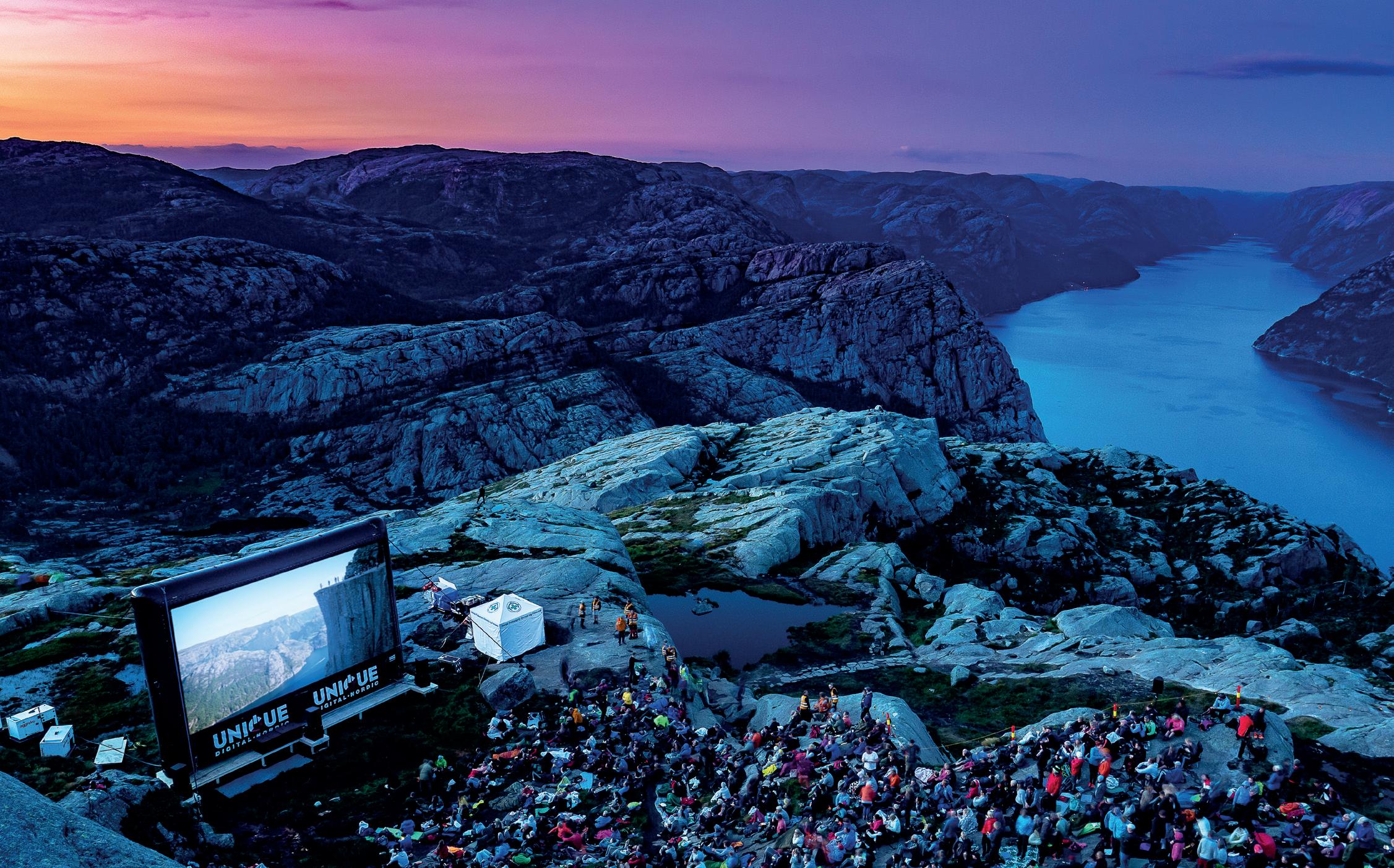







A special ICTA committee, dedicated to exploring and addressing issues on sustainability in exhibition, will be formed in the very near future. Watch our website for updates (www.icta-web.com).
The ICTA will hold its annual membership meeting at CinemaCon, on Tuesday April 25 in the Emperor’s Ballroom at Caesars Las Vegas. We hope to see many of you there.


CT: Please introduce yourself, your role for Volfoni and a bit about your background. I’ve been working for Volfoni for the past 11 years, starting out as [former boss] Alain Chamaillard’s sales assistant, to today, where I’m the Chief Commercial Officer responsible for global sales, both in cinema and the AV industry (what we call the “pro industry”) for Volfoni Group.
Before working at Volfoni, I used to work for an important Spanish marketing company as procurement and sales manager where I used to travel several times per year to China, searching for promotional product suppliers to widen our product portfolio. I must say, I really enjoyed this job as I learned so much about negotiating, materials & qualities, transportation methods.
I also used to work with five brothers (who were my bosses and colleagues) and it was very funny to see how they were always fighting over such unimportant stuff… I really enjoyed those years where I learned a lot and had so much fun.
CT: What are you looking forward to for the industry in 2023?
I want the global box office to keep on exceeding our expectations as it did during the whole of 2022. Last year, the exhibition industry benefited from very important titles like “Top Gun: Maverick”, and ended the year strongly with “Avatar: The Way of Water”. This year will offer three Marvel titles, a new Indiana Jones film, “Mission Impossible: Dead Reckoning Part One” (with the popular Tom Cruise, of course), “Dune: Part Two”, “The Super Mario Bros. Movie”,
“Barbie” and Christopher Nolan’s “Oppenheimer”. We can already anticipate (unless we have another pandemic) that this year will totally ROCK.
But what I really want is for 2023 to be a very strong 3D year after “Avatar: The Way of Water”, where the end user has the quality and experience of this 3D film fresh in their minds. We already have many important 3D titles coming, like “Guardians of the Galaxy
when a big title like this arrived. But, of course, we were more than happy to do the work we needed to.
More than just learning from the experience, we reinforced the mantra we already have in this company: we’re all in it together. And also, thanks to the anticipation of the film, good coordination and planning, we didn’t let one customer down when they really needed us. My team was magic.
CT: What’s your proudest achievement in your career to date, and why?
Vol. 3”, “The Little Mermaid”, “Indiana Jones and the Dial of Destiny” or “Dune: Part Two” (to name just a few). But I want more. I want exhibitors to invest in good 3D, to really invest in lig ht on the screen (please, no less than 5fL for 3D!) and for studios to keep on producing high quality 3D films after seeing the reaction to “Avatar: The Way of Water”. This is what I’m looking forward to!
CT: The roll out of “Avatar: The Way of Water” must have been particularly busy and challenging for Volfoni. How did you all prepare for its release? And what were the major learnings from the experience?
It has indeed been a challenge for all of us. After the pandemic (and a few years of nonexistent good quality 3D titles), Volfoni’s team sadly became smaller, so the amount of work for each of us was suddenly tripled
It is funny how I would have answered this question in a totally different way before becoming a mother in 2021, but I can honestly say that being a working mum has been the proudest achievement in my career to date.
I love this industry so much that three days after giving birth I was in the hospital with my laptop, taking orders and working with my customers. I’m passionate about my job.
I feel so proud of working mums, and I can tell you, it is two full time jobs - and we demonstrate to the world what multitasking and being efficient really means.
CT: What’s your favourite thing about working in this industry?
For me, the best part of this job is the people. We’re all like family, we all know each other, our families, our stories… some of us even visit each other in different parts of the world! You cannot find this in a bigger industry. This industry is the perfect size, with the perfect people who have the perfect attitudes! Long live the cinema!
“Three days after giving birth I was in hospital with my laptop... working with my customers.”
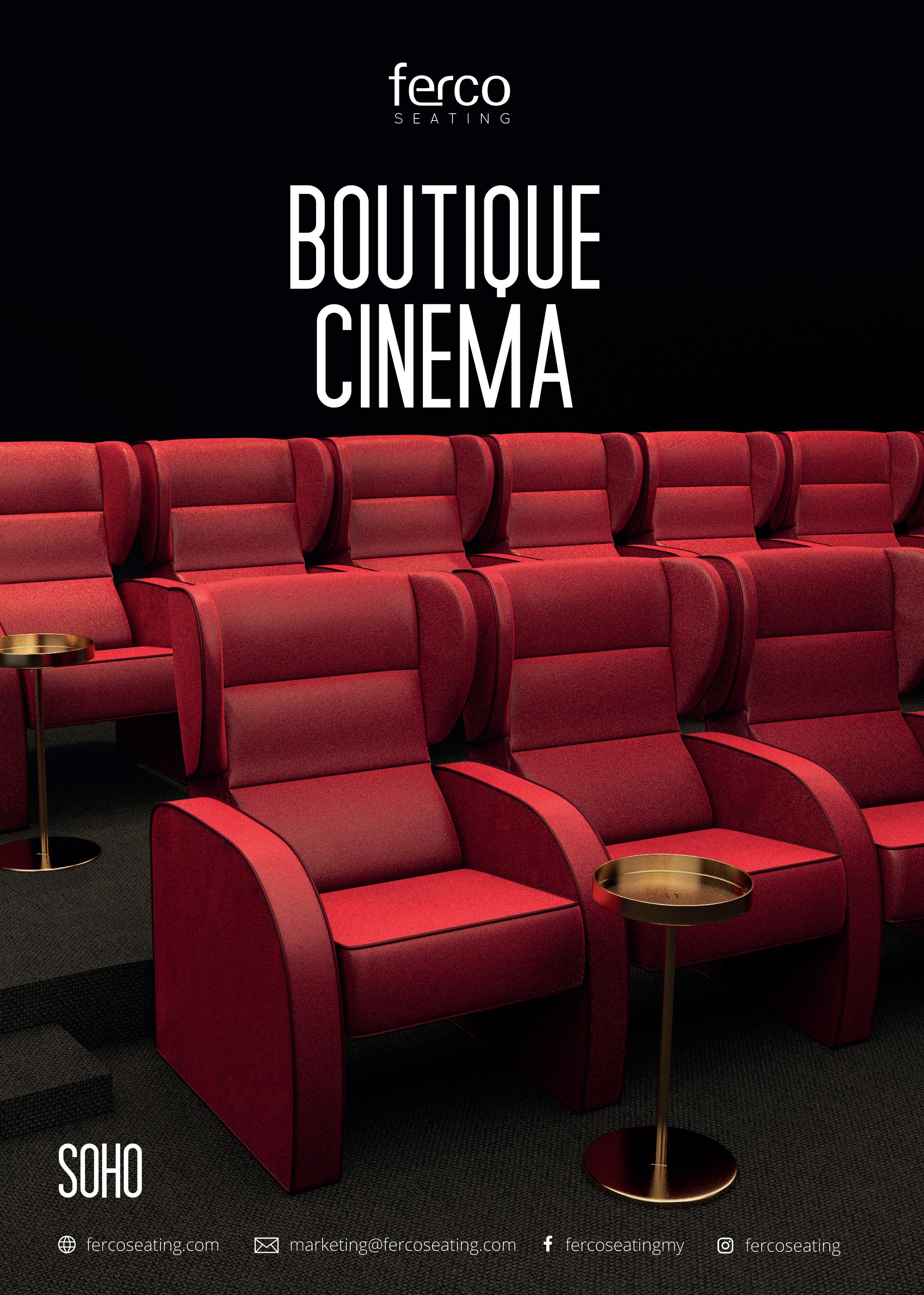

Why settle for status quo when you can experience something truly special. With a simple enhancement to your current projection system, catch every incredible detail on the screen with the Cinionic Laser Light Upgrade and watch every downhill corner like you are part of the action.
Now that’s brilliance redefined.
